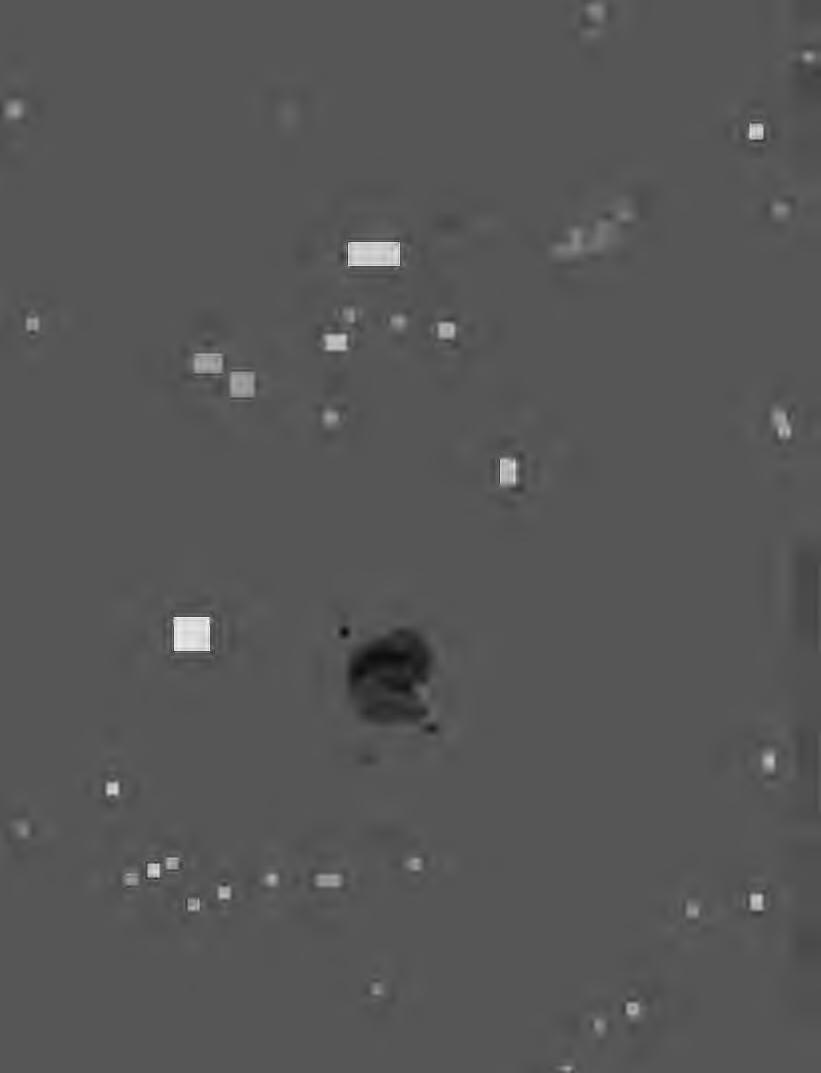
CQ # 36 CENTER QUARTERLY A Journal of Photogrjphy and Related Arts Summer 1988 , $5 ,)
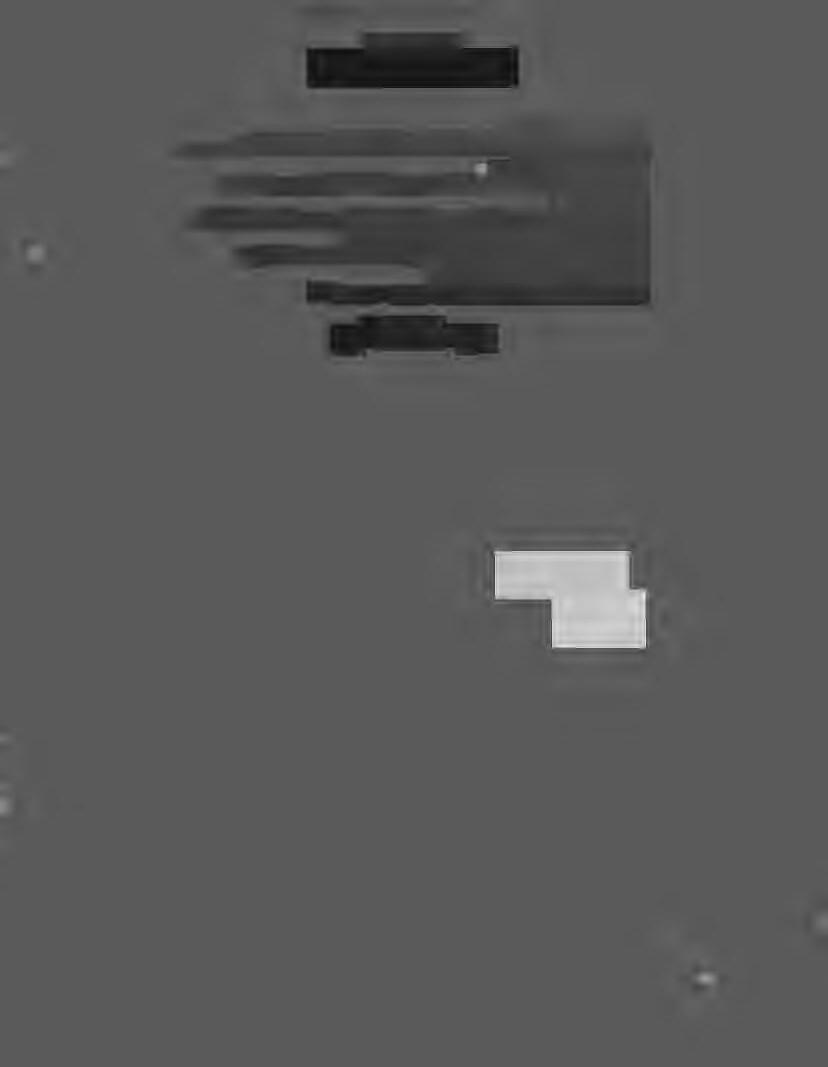
Photographs
Auction: Tuesday, November 1, 1988 at 10:15 am and 2 pm.
Exhibition: Opens Friday, October 28.
Illustrated catalogue: $22, sale code 5766. To order with credit card, call 1-800-752-5686.(In New York, call 212-628-4604/4616.)
Consignments for our spring auction of Photographs will be accepted through mid-March 1989.
Inquiries: Beth Gates-Warren, (212) 606-7240. Sotheby's, 1334 York Avenue, New York, New York 10021.
Brassai, Couplein Paris Cafe,silver print, signed by the photographer, 1930's, printed later. Auction estimate: $1,200-1,800.
FOUNDED
SOTHEBY'S
1744
©Sotheby's, Inc., 1988 John L. Marion, principal auctioneer, #524728
CENTER Quarterly
CENTERQuarterly ii publishedby the Centerfor Photography at Woodstock((PW),59 TinkerStreet,Woodstock,NY.(914)679-9957.Copyright1988,theCenterForPhotography at Woodstock.Allrightsreserved.Nopart of the contentsmaybe reproducedwithout writtenpermission of thepublisher.Allworksillustratedin theQuarterlyare copyrighted bytheindividualartistswhoproducedthem;copyrightforessaysbelongstotheauthors. Allopinions,ideas,andillustratiomare thoseof thewritersandartiststhemselvesand do not in anywayrepresentofficialpolicyof (PWor its membership.Allmanuscripts andart worksubmittedmustincludeSASEfor return.(PW,whiletakingall reasonable care,cannotbe responsiblefor unsolicitedmaterials.ISSN0890-4634
Editor SilJaeger
AssociateEditor
AdvertisingManager
Printer
Typesetting
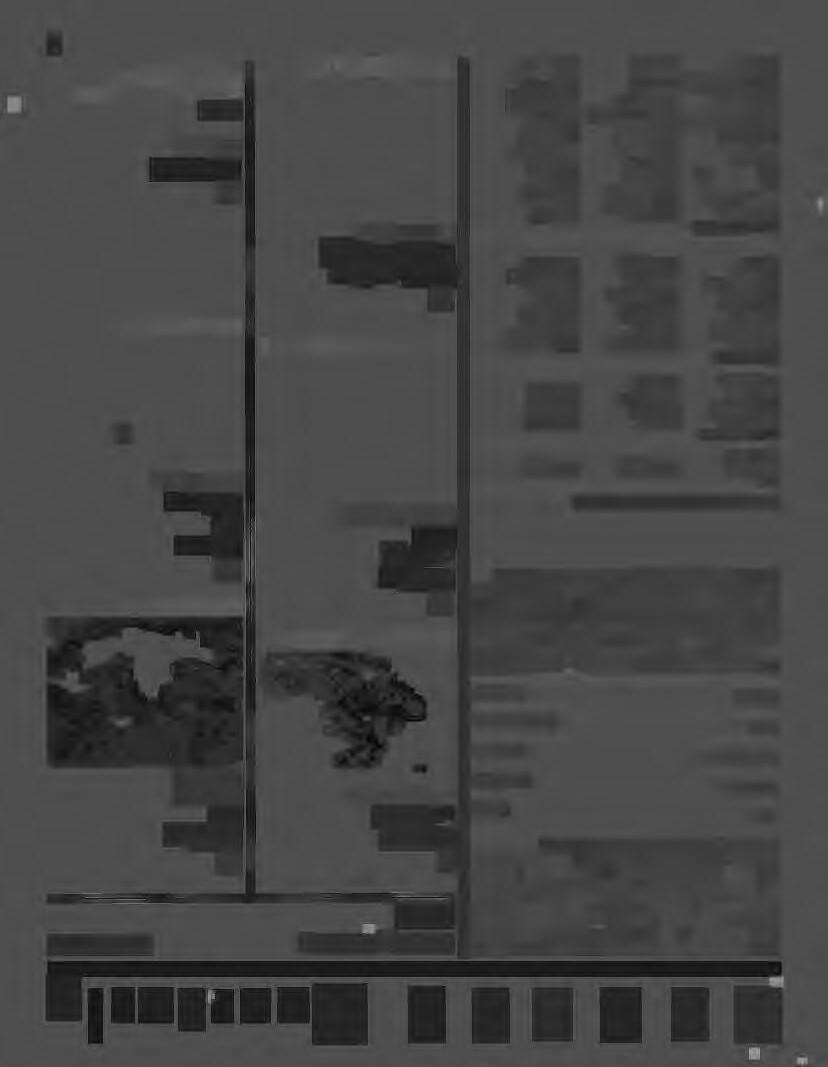
KathleenKenyon
(olindaTaylor
HamiltonReproductions
AlanMcKnight
(PWis a not-for-profiteducationalandartsorganizationwithprogramsin photography, film,video,and relatedart!. Aiwellas publishingthe CENTERQuarterly,(PWoffersa year-roundexhibitionseries,the fourSeasonsfilm Program, a summerworkshopseries, regionalgrants,a darkroom,permanentarchives,and library.TheCenterreceivesfunds fromthe NewYorkStateCouncilon the Am and the NationalEndowmentfor theAm, as wellas manymajorcorporateand privatedonors.(PWdoesnot discriminateon the basisof sex,race,color,handicap,nationalor ethnicoriginin the administration of its educationalpolicies,scholarshipprograms,or otherschooladministeredprograms.
A. D. Coleman
THECENTERFORPHOTOGRAPHYATWOODSTOCK STAFF
ColleenKenyon KathleenKenyon ColindaTaylor Beth Ann Hill
BOARDOF DIRECTORS
Patricia Carroll Ann Lovett
HowardGreenberg John Ludwig
Sharon Horan Dan McCormack
Ellen K. Levy Elliott Meisel
Eric Lindbloom MarcMiller
ADVISORYBOARD
CornellCapa StanleyM. Kanney
Phillip Cavanaugh Peter Kenner
A. D. Coleman Alan Klotz
LizaCowan SusanKomarow
PenelopeDixon RonaldKurtz
Ben Fernandez KennethT. Lassiter
HormanJay ltzkoff SusanManuso
Joan Munkacii
John Pruitt
AndreaStern
DennisStock
Robert Persky
J. RandallPlummer
Lilo Raymond
CynthiaSchupf
John Schupf
Dale Stulz
CharlesTraub
LotteJacobi HelenMarcus Barry Roll Weiner
Art Kane Barbara Morgan CourtiaWorth
FRIENDSANDPATRONS
HicholasArgyros Sharon Horan
Judith Rogol
Craig S. Brown Flo & HarveyIsaacs Rotron,Inc.
Marty& SusanCarey HormanJay ltzkoff Whitty Sanford
Alan Carey DouglasJames HaneySiegel
Mr.&Mrs.TerenceCarle ColleenKenyon
DavidSilver
MaxineChan Dominiclam MartheSmith
Jennifer Cole Ellen Levy Sprint Systemsof
Peter B. forreia Marcia Levy Photography
MichaelFlamen John Ludwig DennisStock
Frances& HansGerngross Joel Mandelbaum BruceTorrence
Jack Grainger Joyce& Robert Menschel Jean Upbin
HowardGreenberg RichardJ. Mertz Carl VanWagenen
Tom Grill LilyanMiller Todd Wiedenkeller
Mr.&Mrs.Elliot Gruenberg MarcMiller NancyWillard
Linda Hackett ChuckPine Jean & Jim Young
MichaelHenry Tom Remick
StephenJ. Ziffer
Volume 9, Number 4 Fictions 4
TheImage inQuestion
10
Kathleen
David Levinthal, from Hitler Moves East, 1976
Surrealism isaDirty Word
Kenyon
16 Awakening,Time, Revelation,Sunday Tamarra Kaid a
Shelly Bachman, from DoubleEntry, 1984-1987. Detail
Summer 1988 19 Everything Gets Strange John Eder Anonymous, circa 1910. Detail 24 Influence and Confluence Chris Wayne
Tamarra Kaida, Time, 1987. Detail
1987 29 NotedBooks Bil Jaeger Cover © Joel-Peter Witkin, ManuelOsorio,New Mexico, 1982. Courtesy Pace-MacGill Gallery, NYC, NY. 3 ..
Lorie Novak, Fragments,
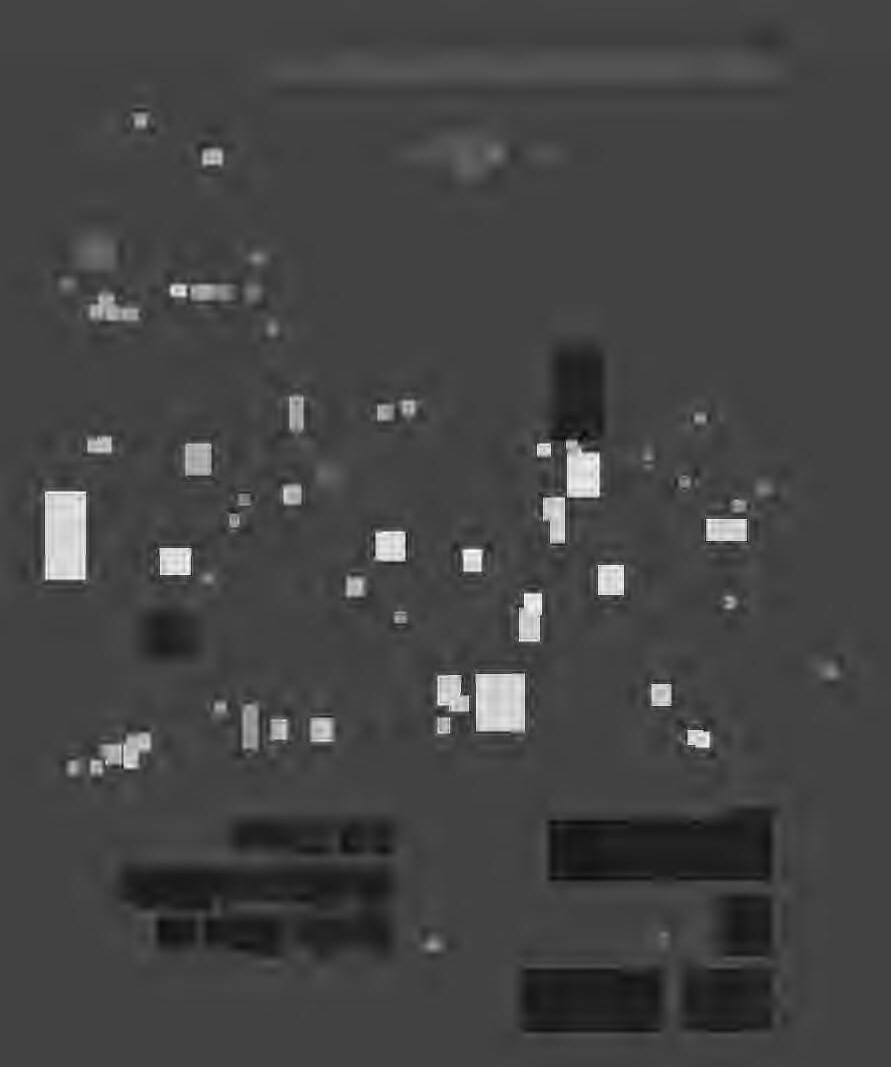
THEIMAGE IN QUESTION
FurtherNoteson theDirectorialMode A.D.Coleman
4
Joel-Peter Witkin, Las Meninas, New Mexico, © 1987. Courtesy Pace-Macgill Gallery, NYC, NY.

Yet it is not (it seems to me) by Painting that Photography touches art, but by Theater . . . Photographyis a kind of primitive theater, a kind of Tableau Vivant, a figuration of the motionless and made-up face beneath which we see the dead.
-Roland Barthes 1
Indeed. Before me lies a newspaper story, full of the tawdry stuff of soap operas and Raymond Chandler novels, tattered lives summed up in a few lean paragraphs:
Laguna Niguel, Calif., July 4 (AP)-A contractor going througha divorceand child custody suit appearedto be griefstricken when sheriffs investigatorsshowed him a photograph of his wife on a morgue slab, the authoritiessaid Tuesday.
The photographconvinced FrederickPenney, 57 years old, that his wife,Susan, was dead, although the picture has been posed, they said. He was later arrestedfor investigation of solicitingmurder when he paid a supposedhit man
Deputies said Mrs. Penney, 35, cooperatedin setting up her spouse after the authoritieslearned of a possibleplot and spoke to her throughher attorney ... [S]hewas "very quiet, very cooperative" when asked to help, Sergeant [Timothy] Simon said.
She went to the county morgue, where her hair was washed down and her face was tinted to make her look pale and gray. Investigatorsplaced her on a morgue slab and covered most of her body with a blanket, Sergeant Simon said.
APhotoPerfectRuse
"The photo looked perfect, believeme, " he said.
Posing as a deputy coroner and backed up by hidden cameras,anotherundercoverinvestigatornotifiedMr. Penney of hiswife's accidental"deqth"and showedhim thephotograph.
Sergeant Simon said deputies could have made an arrest after the first installmentwas paid, "but we wanted to make it the best case possible."2
Is there some version of the conservative U.S. economists' "trickle-down" theory at work here? When, in 1976, I published an essay in which I attempted a first tracing of the photographic approach which I identified as the directionalmode,3 the concept (though not new, and hardly original with me, except for its nomenclature; I was not making the news, only reporting it) was controversial, the position it represented in the community of serious photographers a minority one at best.
Now, twelve years later, it has achieved legitimacy within photography 4 and is everywhere in the art world; much of the so-called postmodernist enterprise vis-a-vis photography is unimaginable without it, for example. Moreover, if the bathetic, twisted tale synopsized above is any indication, a remarkably sophisticated version of it has seeped into vernacular usage as well.
The average camera user has always been directorially inclined. ("No, no, Emily, move over the other way, right next to Susan. John, you're the tallest, you get in back. Now, everyone smile!") In fact, it's only a small but vocal genus of the art-photography species (along with its historiographic symbiote) that resists this mode adamantly. Presently, however, for the very first time, the form I've called directorialis enjoying a vogue-with all the respectability and critical attention attendant thereon. 5
What was I trying to pinpoint when I coined the phrase, the directional mode, over a decade ago?
One way to answer is to indicate what I did not intend. The critic Douglas Crimp, for example, has proposed the phrase
Joel-Peter Witkin, Portrait of Nan, New Mexico, © 1984. Courtesy Pace-Macgill Gallery, 'NYC, NY.
5 ..
Joel-Peter Witkin, Sins of Joan Miro, New Mexico, © 1980. Courtesy Pace-Macgill Gallery, NYC, NY.
"auteur photography" as a substitute. 6 This evidences a profound misreading of what I meant by the term directorial. It also represents a deep misapprehension of the significance of the directorial approach within photographic practice, as well as an ignorance of the wemises and purposes of auteur theory in film criticism.
Let us disentangle his muddle by starting with the latter issue. Criticism of all media is based on the assumption that the works under discussion are the product not of nature but of culture-that, unlike Topsy, they didn't "jes' grew," but instead evolved out of a set of choices made by the individuals involved in their production, individuals who can be considered accountable for their actions.
For obvious reasons, this is a particularly problematic assumption insofar as the scrutiny of any collective effort is concerned: the greater the degree of collaboration, the larger the number of collaborators, the harder it becomes to ascribe responsibility to anyone involved. "Who's in charge here?" is a question one can reasonably ask at any given moment during such events as a film, a play, a dance troupe's performance, or an orchestral concert.
Auteur theory in film criticism was an Alexandrian solution to the Gordian knot of film production, in which scriptwriter (and original story source, if the script were based on some pre-existent work), cinematographer, director, editor, performers, soundtrack composer, set and costume designer, and diverse others were inextricably entwined. Who, under those circumstances, was the "author" of the film (auteur being French for author)? Auteurism's answer: The film ultimately was the "work" of its director-that is, it was the director who, at the crucial stages, "gave his/her consent" 7 to the final statement.
This bold stroke allowed film critics finally to discuss films as organic wholes whose successes and failures, in the last analysis, were not parceled out among an assortment of quasiautonomous functionaries in some fragmented (indeed, Balkanized) version of the film-making process. Auteur theory unified all these under the hegemony of the director-the auteurmaking him/her accountable for all decisions, converting all other collaborators into a support system for the auteur' s controlling vision.
As an encompassing hypothesis, this idea embraced all styles of film-making, from the "documentary" through the "experimental" to the vastest Hollywood extravaganza. It applies no less to Robert Flaherty than to Cecil B. DeMille, no more to Maya Deren than to Stephen Spielberg.
There is no need for auteur theory in the critical analysis of still photography. Every photographer is an auteur: Robert Frank no less than Cindy Sherman, Les Krims no more than Dorthea Lange. While there may be people who still believe that cameras take pictures, the understanding that the photographer is accountable for the images s/he makes has long been fundamental to any critical relationship to photography. Collaborations of the sort which pervade the film-making process are the exception in still photography, not the rule; the only ones to which auteur theory might fruitfully be applied are those between, say, commercial/fashion photographers and their clients/ models/ art directors, or press photographers and their editors-in which cases the auteurs are no longer the imagemakers, who are reduced to the still-photographic equivalent of cinematographers, but rather those who wield the power of contextualization.
The only significant connection between directorialism and auteurism as concepts is that inherent in the directorial mode as an approach to praxis is the explicit assumption that the photographer-not the subject, not the medium, not the world at large-is the generative source of his/her work. This is a
Michals,
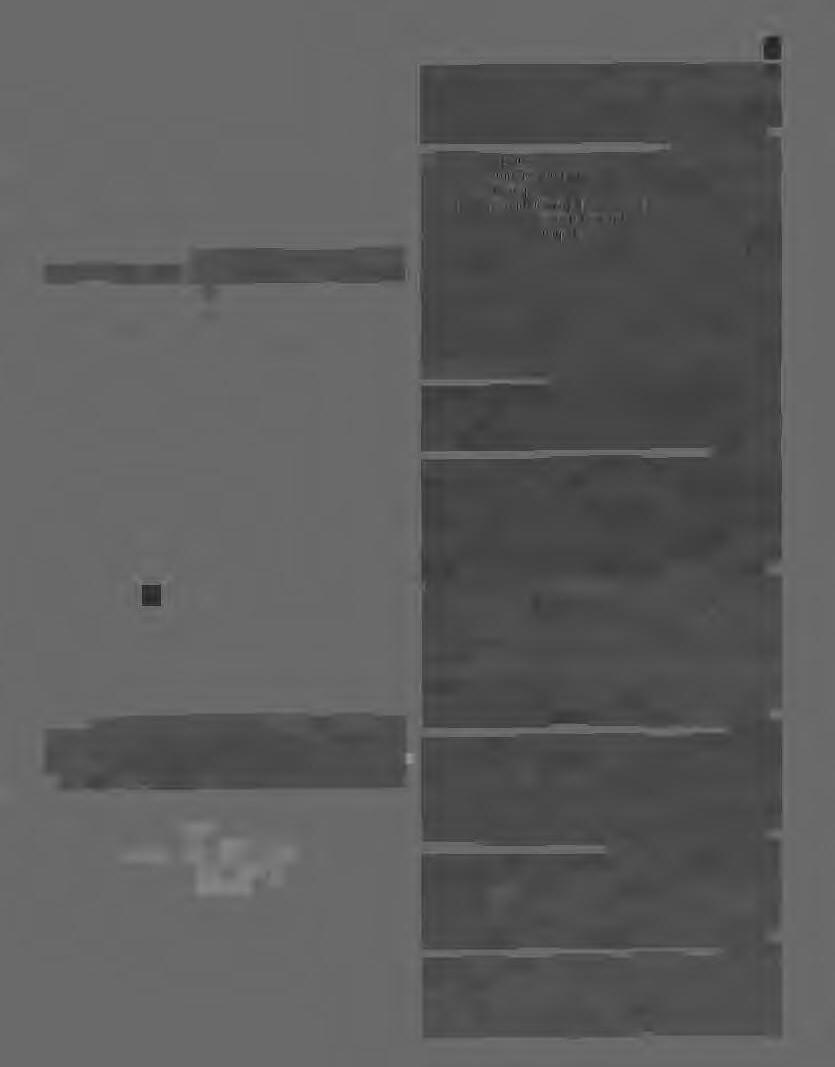
May,
"Someday, someone may touch you on the shoulder with affection, a timid indiscretion. And you may flee, frightened and flustered by what you want. Be brave, touch and hold, for you may need these memories, when you're old." Courtesy Sidney Janis
6 ---' ·~ •"J-l'" )' :,__,,It.I~qi. ,h j .•'[I,, I "( ~·7 r ~( &·,,. , .1 le I /:'I,
Duane
Someday, Someone
1986. 5 x 7" on 11 x 14".
Gallery, NYC, NY.
Bart Parker, A Close Brush with Reality, © 198 I. Book cover, color original, Visual Studies Workshop Press.

truth that is often forgotten (by viewers, even by practitioners themselves) in relation to work produced in other modes. Thus the increasing volume and influence of work in the directorial mode over the past decade and a half may well have helped lay to rest the lingering ghost of our culture's wishful fantasy of the photograph as a neutral, uninflected image which has no maker, no "author.".
For the simple fact is this: There are no neutral photographs.
As Thomas Kuhn has pointed out, "any description must be partial" 9 By its nature, a photograph is a descriptive rather than a transcriptive artifact. As such, it reflects inevitably at least two sets of biases, two viewpoints, on which its existence in the world is predicated: 1) Those of the inventors, designers, and manufacturers of the system-camera, lens, film, darkroom equipment and chemistry-employed in the physical production of that particular image. 2) Those of the photographer who controls the specific application of that system to the occasion of the image in question.
Every photograph, therefore, is a manifestation of these biases interacting with whatever was before the lens at the moment of exposure. This is inescapable. Consequently, any response to a photograph-whether from an actively analytic critical attitude or a more passively absorptive, spectatorial modenecessarily involves the viewer with the ostensibly invisible presence of the photographer as well as the more insidiously covert influence of the medium itself. This is in addition to the subject itself.
The photographer, then, is an active partner (most often the dominant one) in the construction of any photographic version of the world.
The work of every photographer describes a unique, personalized world, a version of the universe shaped by that photographer's sensibility and intentions. In the imagery of those who choose to function directorially, this shaping is more aggressively done, thus more undeniable; the pretense that the photograph merely mirrors "the way things looked" gives way, as I've just suggested, to the forced realization that what the photograph encodes is a perspective, a viewpoint, an opinioneven, possibly, a fiction. As Barthes has written, "[T]he photograph allows the photographer to conceal elusively the preparation to which he subjects the scene to be recorded," this preparation permitting the introduction of layers of meaning, connotations, "produced by a modification of the reality itself." 12 (Emphasis in the original.)
Once such other strategies as extended form (sequences, suites, photomontage or photocollage, image-text combinations), elaborate stage sets and/or costumes, highly stylized poses and the like manifest themselves in the imagery, it becomes virtually impossible for the viewer to believe in the image as a slice of or report on reality. This frank acknowledgment of the photographer's control over the mise-en-image evokes a different viewer response altogether, the suspension of disbeliefmaking it clear that both photographer and viewer are operating, consensually, within what the late sociologist Erving Goffman called "the theatrical frame."
Theater takes place in space; it requires a proscenium. Those who work within this mode are therefore less likely to be concerned with the photograph as a two-dimensional graphic "composition." Their attention will more likely be pointed toward the photograph's capacity to serve as an effective visual illusion of three-dimensionality, a spatial structure. Yet this is not always the case. With his eccentric darkroom craft strategies, for instance, Joel-Peter Witkin produces objects that call attention to themselves as such by the internal evidence of their manufacture. Duane Michals's handwritten texts, though not embedded within the photographs themselves, remind us that the photo-
M. Richard Kirstel, untitled from Water Babies series, n.d., 11 x 11". Courtesy the artist.
7 ..
M. Richard Kirstel, untitled from Projections series, n.d., 11 x 11". Courtesy the artist.
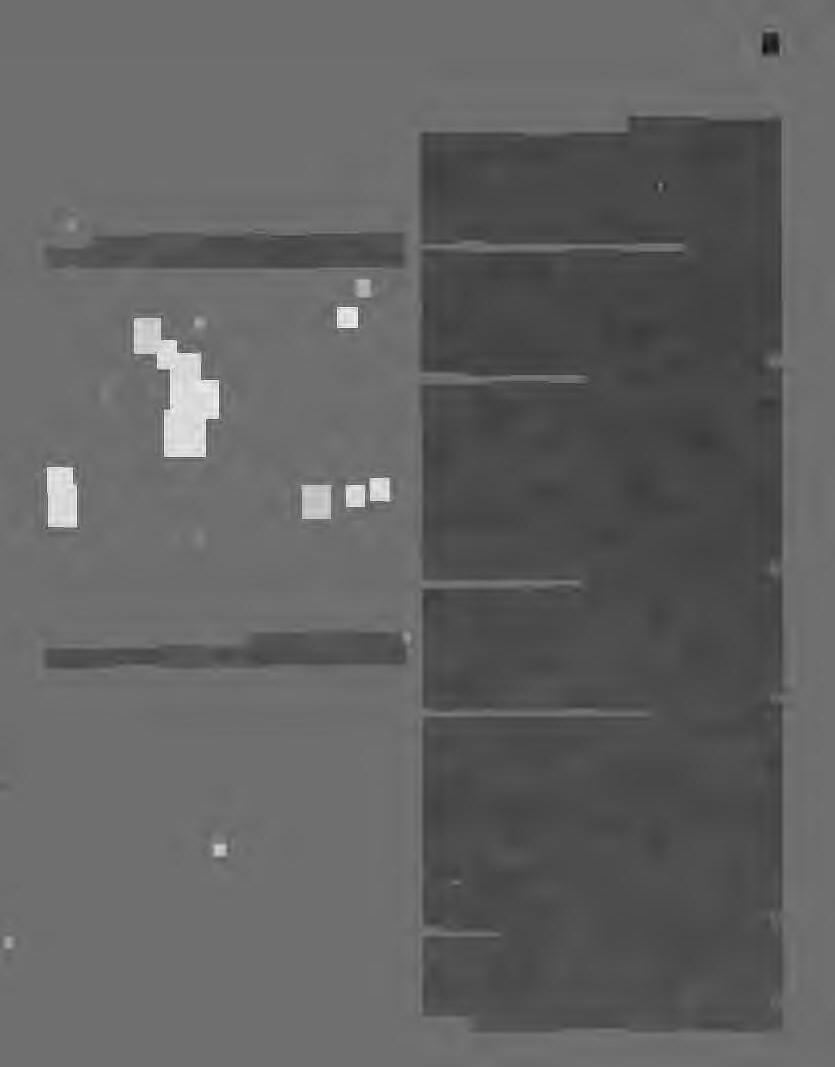
graphic print is a sheet of paper, not a sheet of glass.
Also typical of the directorial approach is the incorporation of dolls, masks, and other simulacra of the human into the scenarios. For many years relegated to mundane service in photography as sentimental signifiers of childish innocence, these artifacts were rescued in the late 1960s by image-makers who reinstated them as cultural icons, as totems.
Some directorial photographers introduce other kinds of artifacts as protagonists in their dramas. Here directorialism reveals itself as-in part-an extension of the still-life tradition in painting, particularly the vanitas mode of the Dutch masters, with its deployment of symbolically-charged objects in aifegorical configurations. All still lifes that involve the photographer's arrangement of their contents are inherently directorial, even when the concern is a strictly formal one. But many current miners of this vein introduce objects intended to function on a metaphorical level as well. Sometimes the connotations implied by their appearance are specific and precise. In other cases, the photographs are occasions for the "chance meetings" so beloved of the Surrealists-as in Les Krims's world, where a kind oflunatic order prevails: everything inappropriate, everything in its place.
The transformation of a place into a space-the creation of a photographic equivalent of the stage set-is another hallmark of the directorial impulse. Nowadays these effects seem to become ever more elaborate; some of the environments and/or scenarios crafted by photographers involve extensive planning, then days of physical effort. Perhaps, as the workings of the worl<l become (as Brecht proposed) increasingly masked and remote, the operations needed to strip away the facade must become correspondingly intricate.
Also unique to the directorial mode-and extremely obvious in its difference from previous art-photographic practice-is the use of the human presence in predetermined, highly controlled fashion. None of these images are reports on spontaneous human behavior; none are observations of "found" human gestures or interactions. In all cases, the will of the subject has been surrendered to the dictates of the photographer, who directs his/her actors in the drama portrayed. This, too, has its roots in traditional photographic forms-think of the studio nudes of Ruth Bernhard and Edward Weston, or the formal portraits of Arnold Newman and Lotte Jacobi. Here, however, more clearly than in any other form, the people in the pictures have become the photographer's dramatis personae, the "cast of characters" for the tableau vivant.
Directorialism in photography has manifested itself in many ways over the years, from the multiple-negative montages of 0. G. Rejlander and H. P. Robinson in the Victorian era to the interventions in the fhysical landscape of Mario Giacomelli from the 1950s onward. 4 The full-scale exploration and redefinition of this mode in our time signals its overdue acceptance as one of the central devices for creative inquiry into the world of appearances, and for the analysis of the medium of photography itself.
The directorial mode peremptorily challenges our longcherished assumptions about the transparency of the photograph, its purported neutrality, its presumed objectivity; insistently undermining the credibility of the photograph, its puts the image in question. Since neutrality always favor~ the status quo, and the illusion of transparency serves the power structure rather than the disempowered, this mode has profound political and cultural implications.
8
David Levinthal, untitled, 1986. 3 x 3', acrylic on canvas from SX-70 Polaroid. Courtesy the artist.
David Levithal, untitled from Modern Romance series, 1985, 3 x 3', acrylic on canvas from SX- 70 Polaroid. Courtesy the artist.
NOTES
I. Camera Lucida: Reflections on Photography (New York: Hill and Wang, 1981), pp. 32-32.
.- 2. "Faked Morgue Photograph Helps Snare Suspect in Plot," New York Times, July 5, 1984.
3. Artforum, Vol. XV, no. 1, September 1976, pp. 55-61. Reprinted in A. 0. Coleman, Light Readings: A Photography Critic's Writings, 1968-1978 (New York: Oxford University Press, 1979).
4. Indeed, in a recent editorial, Andreas Muller-Pohle proposed that "The currently dominate [sic] tendency is towards a staging of the picture as an answer to the aesthetic obsolescence of 'straight photography.' " ("Young European Photographers '86," in European Photography #29, Vol. 8, No. I, January-March 1987, p. 13.) This is an extremist stance with which I am not in agreement, though Muller-Pohle has argued eloquently for it elsewhere.
5. See, for example, the catalogue of an exhibition curated by Van Deren Coke, Fabricated to Be Photographed (San Francisco: San Francisco Museum of Modem Art, 1979), and Anne H. Hoy's Fabrications: Staged, Altered, and Appropriated Photographs (New York: Abbeville Press, 1987).
6. Douglas Crimp, "Appropriating Appropriation," in the exhibition catalogue Image Scavengers: Photography (Philadelphia: Institute of Contemporary Art, University of Pennsylvania, 1982), p. 34.
7. This telling phrase is photographer Emmet Gowin's.
8. Light Readings, pp. 251-252.
9. Kuhn, Thomas, The Structure of Scientific Revolutions(Chicago: University of Chicago Press, 1970), p. 16.
10. Coleman, A. 0., The Grotesque in Photography (New York: Summit Books/ Ridge Press, 1977), pp. 72-75.
11. Quoted in Walter Benjamin's 1972 essay, "A Short History of Photography," as translated by Stanley Mitchell, in Screen, Vol. 13, no. I, Sprinc 1972, p. 24.
12. "The Photographic Message," 1961, translated by Stephen Heath; in Petruck, Peninah R., ed., The Camera Viewed (New York: E. P. Dutton, 1979), Vol. II, p. 193. It is worth noting that it is precisely such work that semiotic analysis has found most resistant to its methods; much of the thrust of Barthes's last work, Camera Lucida, consisted of an attempt to transcend the limitations of semiotics in order to grapple with the other aspects of photographs.
13. See Goffman, Frame Analysis: An Essay on the Organization of Experience (New York: Harper/Colophon, 1974), pp. 123-155.
14. Traces of this approach also can be found in the work ·of many photographers who might not be identified with it immediately; though they did not work directorially in the sense described above, W. Eugene Smith and Minor White clearly understood themselves to be utilizing the theatrical frame.
15. This essay originally appeared, in considerably different form, in the catalogue to the exhibit True Stories and Photofictions (Cardiff, Wales: The Fotogallery, 1987). Portions of it first appeared in the essay "Collaborations Through the Lens: Photography and Performance Art," inf. stop Fitzgerald's book Doc'u'men'tia (New York/San Francisco/Los Angeles: Last Gasp/Post Contemporary Productions/ Astra Artz, 1987). This is its first publication in its present form.
© 1988 by A. 0. Coleman: All rights reserved. Reprinted by permission of the author and Scott Meredith, Inc., 845 Third Avenue, New York, NY 10022 USA.
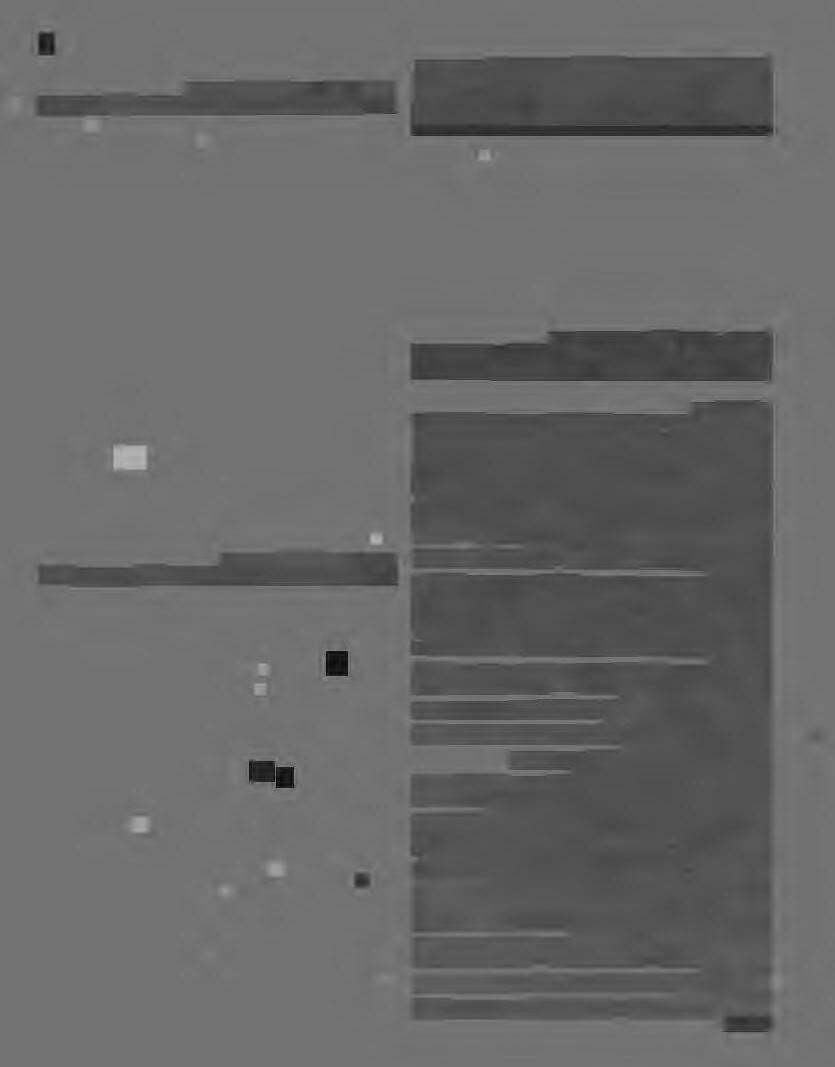
A. D. COLEMAN is Assistant Professor of Photography at the Tisch School of the Arts at New York University. His many writings have appeared in nearly every major forum in the field, including a major article in the Spring 1986 Photocommunique. Coleman has been translated into Chinese, Korean, Japanese, Arabic, French, and German.
Ruth Thorne-Thompson, untitled from Views from the Shoreline series, 1986. 4 x 5". Courtesy the artist.
9 ..
Ruth Thorne-Thompson, Screwhead from Views from the Shoreline series, 1986, 4 x 5". Courtesy the artist.
SusankaeGrant,SheTorePhotosOfA ManThatUsedHer, fromtheAutobiorgaphicalDramasSeries,,1986-1987 Ektacolorprint,20 x 24" courtesyOWGallery,Dallas,TX
JeffMillikan,Neitherof UsSawClearly,1988 Cibachromeprint,22 x 40" courtesyThomasBarryfineArts,Minneapolis,MN
KarlBaden,untitled,1986 gelatinsilverprint,20¾x 30" courtesyHowardYezerskiGallery,Boston,MA
SURREALISM

10
t
f:-' I ' iu.w~
IS A DIRTYWORD
KathleenKenyon

GloriaDefillippsBrush,untitled(2658.1),1988 handcoloredgelatinsilverprint,24 x 30" courtesyMCGallery,Minneapolis,MN
SHELLEYBACHMAN Myapproachto this material KARLBADEN is as a writer, ELLENCAREY as an artist, GLORIADEFILIPPSBRUSH certainlynot as a critic.
DANIELFAUST
Asa student,I stumbled MIRIAMFISHMAN acrossa surrealismbookwhose coverwasred:I hadfoundDada, STEPHENFRAILEY Surrealism,and TheirHeritage SUSANKAEGRANT by WilliamS. Rubin.Thisbook SANDRAHABER becamea kind of biblefor me
JEFFMILLIKAN and the genrea never-ending PATRICKNAGATANI / sourceofartisticinspiration.And ANDREETRACEY yet, the genre is repeatedly declareddead.
LORIENOVAK
Theflap of the jacketof RICARDOSALCEDO RichardMartin'sbookFashion ANDRESSERRANO and Surrealismdeclaresits CARLASHAPIRO demise.Butno:it keepssurfacing, JOSEPHSQUIER submerging,and re-emerging thereseemsto bea usefulneed it fills. It's not out of fashion, but in-and-outof fashion.A bandofsecretsurrealistssurvives. Thereisthe legacyofthesixties whenTress,Michals,and
AndresSerrano,ThePassion,1984 Cibrachromeprint,30 x 40" courtesyStux,NYC,NY
Uelsmannusedphotographic surrealismto createtheatreand romance.
Let'sface it. Thestuff from the 20s to the 60s lookslike dreams.
Newsurrealism is not romantic. Nothingpretty. Nothingsweet.
Thesedon't look like dreams. Theseimageslook real. But, they'renot.
Thenewdramasareautobiographical,they take cluesfrom imagesandviolencefromTVand movies,not fromtraditional theatre.Indeed,Grantrefersto herselfas a moviedirector. .. Michals,withhisissuesofgender, control,spirituality,sinister-in-
11
RicardoSalcedo,untitled,1985 Ektacolorprint,40 x 30" courtesythe artist
the-ordinary,and film serial format,is the bridgeto the eighties.But note the current changein scale(larger)and speed(faster:his film sequence formathas beenmergedto a blur).
Rememberthe cry that Mirrorsand Windows:American PhotographySince/960 (The Museumof ModernArt, 1978) had no politicalwork?Well,if thesepicturesdon't want to makeyouexclaim:Whatisgoing on in the world?,then no pictureswill.
Thesaddest,mosthorrible, mosttouchingpicturesI'veseen, KarlBaden'slittleboywithdog foodand RicardoSalcedo's PrincessDi with mutilated bodies,makeme wonder:What do theseartistswant?Whatdo newsurrealistsdream?
They(Nagatani/Tracey)

MiriamFishman,Who'sGame,1987
Ektacolorprint,40 x 30"
JosephSquier,WaterHoly,fromthe series TheArenaOfHotEvents,1986 courtesythe artist
dreamof equalityand world peace:"Themostfrightening circumstancebeyondourcontrol ... nuclearwarunleashed,isthe predominantthemeof our work.... "
Theyplay withillusion. Thelyingphotograph is purposelyused.
Theculture bombardsus with messages. Willwe become Millikan'sstrangledreferee?
Squier'snamelessvictim?
Or,Serrano'spissed-onMadonna?
Toughandcool,theydemand another,better realiW:honest and fair-minded.Thesepictures aren'tdumbor funny.Theyare seriousconfrontationswith illusion,with the scienceand technologyof control. Theytake a hardheadedlook
gelatinsilverprint,60 x 40" courtesythe artist (gritty,intelligent,aware):
What'sfact?
What'sfiction? Howdoescurrentculture confusethe two?
A self-appointeddeconstructor of culturalmyths,Bachman (influencedbytelevision)creates fictionaltexts,whichappearreal, to examine"truth."Shereviews old magazines:Lifeand Look. Squier,too, usesLifeas source material.
Badentakes imagesfrom televisionscreens,makesdisconcertingcementedphotomontage sandwiches,andcoollyquestions crazyconsumerculture.
Brushincorporates"timeless/ uneasy"objectsto investigate contemporaryconnotationsof communication(orlackthereo~. Radio,monitor,speaker... does Gloriahavea sewingmachine(?)
12
DanielFaust,1/JndomWordMachine,Philadelphia,1981 LaminatedCibachrome,18x 24" courtesyAmericanFineArts,Co.,NYC,NY
andan umbrella?(yes).Theseare literally"interior"images, bringingto mind the surrealist paintersMagritteandDeChirico, and nostillphotographers I can thinkof.I can'thelpbutseelate night movies,privateeyes.
The"classical"surrealists wouldhavelovedFaust'supdate on automaticwriting:the RandomWordMachine.Of the manyphotographsof wax museumsanddioramasI'veseen, Faust'swork is the most hallucinatory,the mosttrenchant. Howcan you shootat Ripley's BelieveIt or Not Museumand not producesurrealphotographs? Forall the coolnessFaust's picturesprovide,it's my guess insidehe's horrified.Hisphotographscritiquecontemporary assemblyanddisplaymodes;not cute or disdainful,his are frighteningimages.

Fishman'surgeto "challenge contemporarynotionsof beauty andthewayswomenare depicted in the media"issharedbyGrant andShapiro.Workbythesethree representsomeof the most interestingfrom a muchlarger group of womenworkingwith re-viewingstereotypesand roles for womenas subjectand as photographer.
L'Amourfou,surveyingphoto surrealismof the 1920s,1930s, and 1940s,containsno pictures by womenat all until the bibliography.Howsad to find the book'sfour womenwriters able to unearthso fewof their own.(Thesame is true for KathleenMcCarthyGauss's PhotographyandArt "surreal" chapter:no picturesby women, althoughworkfrom the 1970s by Jo AnnCallis,RuthThorneThomsen,and SusanRankaitisis
SeledireFictions fromthe OoubleEntrySeries,1984-1987 gelatinsilverprint,39 x 21" courtesythe artist mentionedin the text.Eventhe remarkablePoeticInjuryproject wascuriouslylopsided:onlyone third of their artists were women.)
Theimportanceofwomenas imagemakersin newsurrealism isa responseto culturalchange. It isa clearmovein a political genre.
L'Amourfou doeshavemany picturesof women.Thosecreamy violin-shapednudes.Contrast those"models"to the women subjectsin Bachman,Carey Grant,and Shapiro.Traditional modelsare notused-the body is the artist's own,or media figures.If,as Martinclaims,"The mostvoluptuoussymbolof Surrealismwas lips ... both decorativeand descriptive" (FashionandSurrealism),he'dbe in foran explosivesurprisewith the lips Bachmanpresents.
..,
1ust
"I d1dn"twant to go. My father made me. My mother bought me a new dress and loaned me her high heel shoes- they were suppased to make me feel grown up. I arrived late. Everyone seemed to be enjoying themselves. I suppase it was a good party. but it
seemed boring to me."
"For a moment when Tglanced at hlm I thought I was reliving a scene from my past. I saw then what I should have seen before-namely, that the reason I was so comfort.able with him was because he,seemed so familiar He looked exactly like that ma.nfrom the TV show I used t.o watch every morn.ing when 1 was a.kid."
ShelleyBachman,
13 ..
SandraHaber,untitled,1987 Ektacolorprint,I5 x 40" courtesyLaurenceMillerGallery,NYC,NY
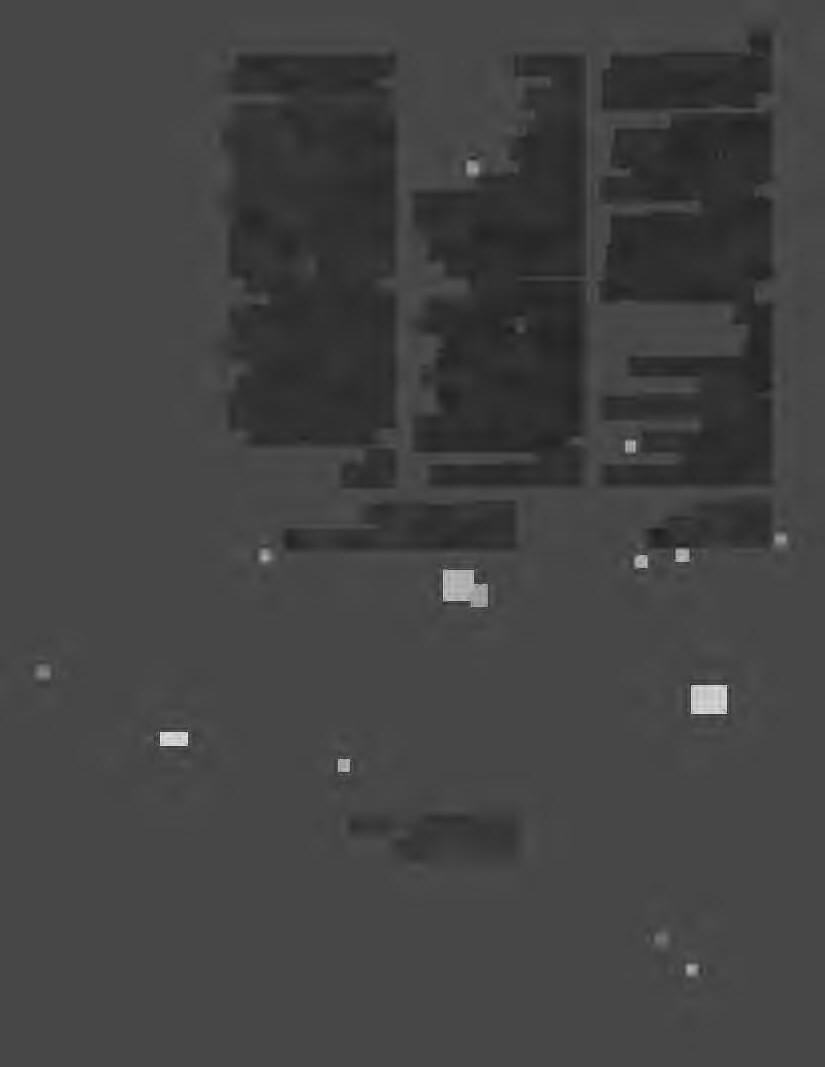
StephenFrailey,untitled1986 Ektacolorprint,30 x 30" courtesythe artist
I'mfascinatedwithFishman'swork. It's so seductive. Lusciouson the surface, underneath, a sock-you-in-the-mouthpunch.
Lookclosely at Grant'sFishman'stitles. Feel the anger.
Sincebloodand glassare in my nightmares,the fascinating sick-to-my-stomachfeeling I get viewingGrant'sand Serrano's photographsisa signalthat the workworks.
Shapiro'stusslewithpicturing aging is toughstuff for a beginner.She handlesit well. DuaneMichalsand Joel-Peter Witkintake note.
To me, Frailey'sbaby photo andteethona black-holeground is the quintessentialsurrealist
PatrickNagatani & AndreeTracey,14th&Chambers,1986 ColorPolaroidtriptych,24 x 60" courtesyJayneH.BaumGallery,NYC
meetingpared downfor the eighties.
Haber,likeBaden,workswith imagesfrom TVto "re-evaluate the impactof imagesthat bombardus everyday."We searchfor hiddenmeaningsin Haber'spictures.EnterMTV... we see Peter Gabriel,Max Headroom... babiesappearnext to rockstars.What'sthe reflection on our lifestyle?
Clearly,color is essential. Theygrew up with colorTV. Fifteenoutofseventeenpreferit. Coloris contemporaryphotography. Certainqualitiesattachthemselves to the "new"color: process(ed), extra bright, drenched, luscious, disarming, bold, cartoon-like, dripping, red.
I remembera children's fantasytale,TheBorrowers:little peoplecamethroughthe floorboardsto find the meansfor their privateworldbelow. Special,secret,and out-of-scale, the "new borrowers"havethe samesavoir-faireand easywit with their dislocations.
They"borrow"from TV, magazines.life collectingand assembling,siftingand reviewing theculture.Astheyborrowfrom TV,film, video(Frailey,Haber, Millikan,Nagatani/Tracey),they createa newformat:the rolling scroll-likehorizontal.Forstill photography,this is a stretch. Andwhenyou see it, you know it's the eighties.Theexquisite corpse--horizontal.
Haberlinksto Novakbyusing imageryfrom personaltravel
14
CarlaShapiro,untitled,1987 seleniumtonedgelatinsilverprint,15x 11¼ courtesythe artist
and television;Novakand Millikanare linkedby imagery of/in water.Thestrugglefor environmentalcontrolisenormous, nightmarish.
Serranoand Fraileyask: Is surrealismdiluted? Obviated?
I think not. Thenewsurrealists seemto agree with Serrano's passionatesuggestion: Returnto your roots, witha vengeance.
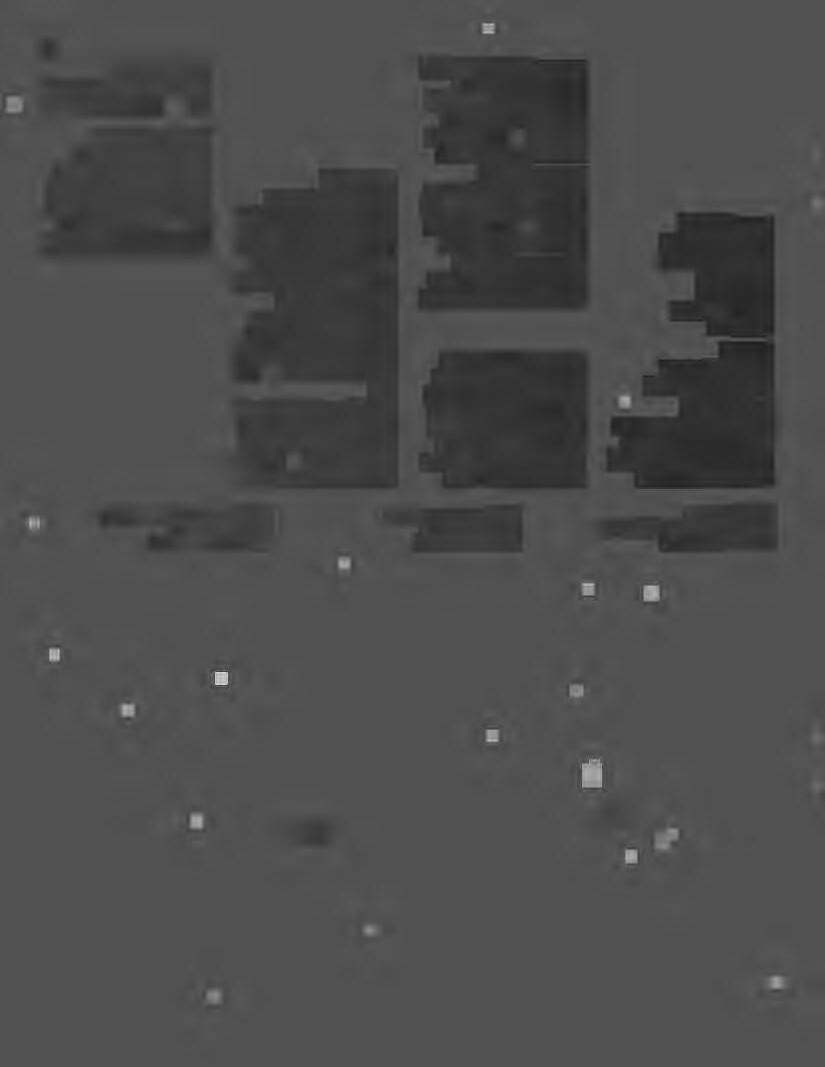
EllenCarey,untitled,1987 ColorPolaroid,24 x 20"
courtesyHr.and Hrs.AlHirschson
This photographywasfirst broughttogetherin the exhibition NewSurrealism:or, the Fictionof theReal,JuneI I-July 24, 1988,createdfortheCenter for Photographyat Woodstock by KathleenKenyonwith the assistanceof BethAnnHill.
Sourcesmentionedin the above essayare includedin thefollowing exhibitioncatalogues:
Dada,Surrealism,and Their Heritage,© 1968TheMuseum of ModernArt,with writingby WilliamS. Rubin(TheMuseum of ModernArt, NYC)
L'Amourfou:Photography & Surrealism,© 1985CrossRiver Press,Ltd.,with writingby RosalindKrauss,JaneLivingston, DawnAdes,and Winifred Schiffman(AbbevillePress,NYC)
Photographyand Art:InteractionsSinceI946, © 1987Cross RiverPress,Ltd.,withessaysby AndyGrundbergand Kathleen McCarthyGauss(AbbevillePress, NYC)
FashionandSurrealism, © 1987 TheFashionInstituteofTechnology,with writingby Richard Martin(RizzoliInternational Publications,Inc.,NYC)
PoeticInjury:TheSurrealLegacy in PostmodernPhotography, © 1987TheAlternativeMuseum, with essaysby RogerDenson, RosalindE. Krauss,and Suzaan Boettger(TheAlternative Museum,NYC)
x
KATHLEENKENYON is an artist who livesin Woodstock,New York.Herwritinghas appeared previouslyinAfterimageandthe CenterQuarterly.Hercollages haveappearedrecentlyin Esquireand Aperture.
Text© 1988KathleenKenyon. All photographscopyrightedby the photographers.
I, ..
LorieNovak,FalseStarts,1986 Ektacolorprint,22
18"
courtesyLieberman&SaulGallery,NYC,NY
15 ..
EXCERPTSFROMTHEFAULTLINE

Revelation
During her seventh year the purpose of life was revealed to her in a dream. She understood that the world was a big classroom and that everyone had come to learn something they considered important. Only, they often forgot what that was. Amnesia was necessary since each person had to discover what really mattered or the lessons of life were useless.
It was explained that many wonderful and some terrible things would happen to her as she grew older. But, she should not believe too much in the events themselves, for like the movies, they were illusions. Rather she should try and perceive them as opportunities for learning what needed to be known.
Already a serious student, she asked if at the end there would be an examination.
"Yes," replied the voice in her head.
"What if I fail?"
"Then you can repeat the lesson. There is no hurry."
When she awoke she knew someone had told her something very important except it was in a foreign language.
Time
A week after her fortieth birthday she heard the ticking for the first time. She awoke, looked at the luminous face on the clock, listened and gradually realized the sound was inside her head. Instinctively, she touched her face and sensed a faint but discernable throbbing. Each merciless pulse making her another second older.
She ran to the mirror and anxiously examined her face. The proof was undeniably before her. The ticking grew louder.
TamarraKaida 16
.l
Text
photographs
T AMP,..RRA KAIDA is a photographer and Associate Professor at Arizona State University. She has recently collaborated with Pulitzer Prize winning poet Rita Dove on the book The Other Side of the House (Pyracantha Press). Kaida's own Tremors from the Fault Line (Visual Studies Workshop Press) is due in Spring 1989 and will include the pieces above and others from the series as well as an essay by Susan Cohen.
Sunday
Since his heart attack two years ago, he found himself inexplicably depressed every Sunday. Sometimes, the sadness was so severe he couldn't bring himself to dress and go downstairs for breakfast.
His wife said it was because his spirit remembered that he was still a Catholic even if he didn't. It was a plausible explanation but he didn't see where it helped him, since he could not retrieve his childhood's faith even to save his soul.
She suggested he try prayer.
He said he felt foolish talking on a telephone when he wasn't sure there was anyone at the other end.
She said there were worse things in life than feeling foolish.

Awakening
She told him that she suspected she didn't really exist, because when she closed her eyes she vanished and only thoughts remained. Someone else's thoughts.
Exactly how this happened was unclear to her. It was difficult to explain, but she was certain someone else was making up everything. Life was only a movie and she was an actress playing herself - as she had many lifetimes before. She said she finally understood that life was serious but not exactly real in the way she once believed
He looked at her as if she were crazy.
l l l
and
© Tamarra Kaida.
..,,.__ 17
AUCTION OF FINE PHOTOGRAPHS
Tuesday, October 4, 1988
Auction held simultaneously in San Francisco and Los Angeles
Minor White, "Song Without Words", 1947, a hand crafted book of 23 silver prints, each measuring approximately 3518 x 4-518 inches, signed in pencil on the text page, spiralbound with clear plastic covers (Estimate: $7,00019,000)
Featuring photographs by Berenice Abbott, Ansel Adams, Anne Brigman, Imogen Cunningham, Baron Adolf DeMeyer, Walker Evans, Robert Frank, Arnold Genthe, Joseph Keiley, Andre Kertesz, Eadweard Muybridge, W. Eugene Smith, Edward Steichen, Doris Ulmann, Brett and Edward Weston.
Also a collection of books on photography including Alfred Steiglitz's journal Camera Work.
Complete condition reports are available upon request. For further information regarding the auction or consigning property for future auctions, please call Susan Friedewald at415/861-7500 ext. 306.
To order an illustrated catalogue for $18 by mail, please call 415/861-7500 ext. 251.
THECENTERFORPHOTOGRAPHY
ATWOODSTOCK, INC. PATRONMEMBERSHIP
PRINTPROGRAM
TheCenteroffersindividualstheopportunitytobecome Patronmembers.Patronsmayselect,in 1988,original printsdonatedbynationallyrecognizedphotographers suchas: BarbaraMorgan,JohnKleinhans,NathanFarb, StephenShore,RuthBernhard,TonyRay-Jones, BereniceAbbott,LiloRaymond,SandyNoyes, WendyHolmes,JudyDater,Kenrolzu,andSheilaMetzner.

BereniceAbbott,JacobHeymannButcherShop,/936
18
• Los Angeles Preview: September 17-19 San Francisco Preview: October 1-3 SINCE1865 Butts~~~!?s&~~~~rfield • ..__ _______________ ~. 220 San Bruno Avenue• San Francisco, CA 94103 301 N. Larchmont Blvd. • Los Angeles, CA 90004
for a freeillustratedbrochurepleasewriteor call: (PW,59 TinkerStreet,Woodstock,NY12498 I ~o·..... 111,..,--· 1---, , i. ~"-·
-EVERYTHING GETS STRANGE
JohnEder
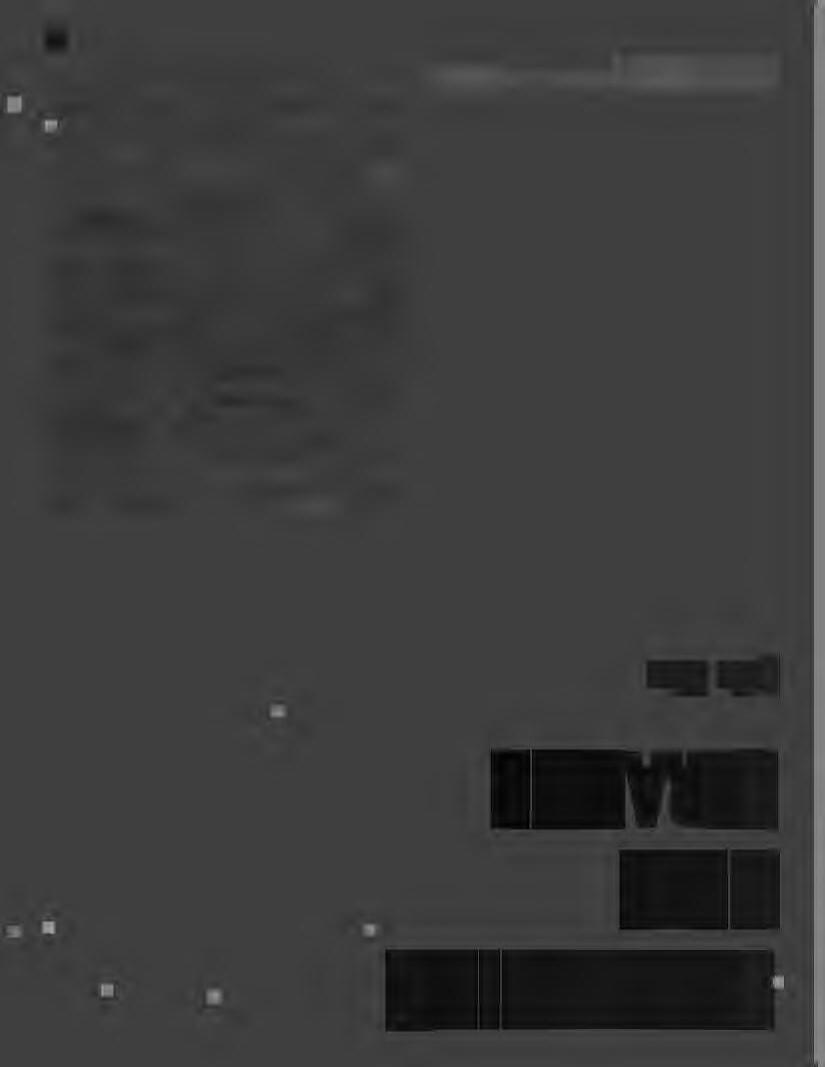
New York City's famous subway gunman Bernard Goetz holds his hands out as if measuring a fish for three girls in bathing suits who wear sashes saying "Bernie's Girls." A man's body is horribly mutilated in an automobile accident. A 1968 Playboy Playmate lies next to a swimming pool, coyly playing with a toy poodle. These seemingly dissimilar subjects come from three photographs which are actually linked, if viewed in an ironic fashion-the way more and more people regard photography.
The wonder of photography is its ability to transform. The photographer freezes a moment in time, transforming it into a piece of paper which can be looked at again and again. The photographer can also transform the subject matter into something it is not in everyday life. This is the type of transformation most often seen in fashion and advertising photography. The subject is idealized and glorified by the camera. Of all forms of photography, photojournalism is usually regarded as the most "real" and "truthful." But with the passage of time, many news photographs lose their original meaning.
The appeal of old photographs is their portrayal of things past in such a vivid, easily understood fashion. We can never really know what the past was like, since it is the past. But we can know the reality of the world in the photograph. "I've always felt a wonder at old photographs not easy to explain ... I mean the sense of wonder, staring at the strange clothes and vanished backgrounds and knowing what you're seeing was once real. The light really did reflect into a lens from these lost faces and objects. That these people were really there once, smiling into the camera. You could have walked into the scene then, touched these people and spoken to them. You could actually have gone into that strange outmoded old building and seen what now you never can, what was just inside the door."
The Hindenberg during its trip to America in the 1930s. Courtesy the Bettmann Archive, NYC, NY.
19 ..,
Anonymous, circa 1910, 3½ x 51/z''.

Neatly summing up part of the vast appeal of photography, this statement by Jack Finney in his novel Time and Again reads like a manifesto of what photojournalism is supposed to be: a gateway to recent or past events, a sense of a shared moment that the viewer never actually lived.
But such a photograph can evolve into something evoking altogether different feelings. Through repetition and familiarity, a picture can become iconic; through usage different from its original intention it can be identified with something wholly different from the thing it portrays. The famous photograph of the Hindenberg disaster is a prime example of both these phenomena. In 1988, many people, when shown the Hindenberg picture would associate it with the rock group Led Zeppelin, which used it on a record cover and as a sort of corporate logo for some time. The Hindenberg picture is also old, and has the curiosity value of an antique. It is in this way an almost camp, kitsch item.
Once one begins to enter the world of camp, objects begin to be viewed in a surrealistic manner. Surrealism could be defined as an ironic way oflooking at the world, an appreciation for the bizarre to be found in the every day, a fascination with the grotesque, the fantastic, and an obsession with the cultural refuse, people, events, things of the past. That sounds pretty much like the tastes of many people, as determined by the mass arbiter of cultural tastes today: the television. TY, especially the rise of extremely popular music videos, and their use of what were once regarded as"avant-garde" film techniques, has conditioned people to see the world in a manner similar to that defined as surrealism above.
From On Photography ( 1970) by Susan Sontag: "No activity is better equipped to exercise the surrealist way of looking than
Fred McDarrah, Robert Kennedy, 1968, © 1988. A campaigning Kennedy in the election year, taken shortly before his death.
20 •
photography, and eventually we look at all photographs surrealistically ... the surrealist strategy which promised a new and exciting vantage point for radical criticism of culture has 'devolved into an easy irony that democratizes all eviden~e Surrealism can only deliver a reactionary judgement, can make out of history only an accumulation of oddities, a joke, a death trip." This process is accelerated in some photojournalism where each image is so strikingly weird as to be immediatef y perceived as a curiosity, having more power visually than the mere reportage of an event. The photograph of Bernard Goetz mentioned earlier falls into this category.
Another is a picture of the victims of a terrorist massacre in the Vienna Airport some years ago. The bodies of slaughtered tourists, viewed from a balcony, have been meticulously supplied with identifying letters of the alphabet by the authorities. The effect is so disturbing as to give the photograph an air of unreality.
These pictures can immediately be perceived as "weird," surrealistic. Other photographs require time to achieve this status. Photographs of political assassinations in the 1960s have now passed from being descriptions of an event into national icons. Stills of President Kennedy's assassination, culled from the Zapruder film, the picture of Lee Harvey Oswald being gunned down by Jack Ruby, Martin Luther King's colleagues pointing to the window where the fatal shots originated, all these photographs have become engraved on the public through repetition, more an emblem of a time of unrest and violence than a news photograph.
There are also juxtapositions in photojournalism which only appear surreal after time passes. Something which appeared insignificant at the time, today looks sinister, premonitory, symbolic. Fred McDarrah's photograph of a campaigning Robert Kennedy, a painting of a weeping head of Christ in the background, is disturbing today because we know Kennedy was
soon to be killed. The Christ figure seems to foresee this. There is a coincidental motifofChristiar martyrdom in many photographs of Kennedy. Many of the most often seen pictures of Kennedy are from his 1968 presidential campaign and feature eager crowds reaching out to shake the hand of the charismatic candidate. The famous photograph of a dying Kennedy being cradled by a busboy from the hotel he died in seems to echo the posture of a Pieta, the lighting of a film noir.
Nowhere is the transformation of photographs more evident than i_npornography. Though photojournalism and pornography have little in common, there is one similarity. Both are specific to their time. Photojournalism is supposed to be a document of the present day, while pornography reflects the erotic tastes of contemporary society. Of course, past society was once present society, and what may have turned on the dirty postcard buyer of the past is for us a curiosity, often humorous, certainly more valuable to modem eyes for its strangeness and form, not its erotic content. Playboy playmates of the 1960s, then considered the ultimate in soft-core erotic photography, today seem innocent compared with explicit conten,porary fare. The photographs have lost their original function, titillation, and are now more interesting for their evocation of the past, of differing standards, not only in their meaning, but in other considerations: color, black and white, hairdos, clothing, etc., often leading to their acceptance as pieces of art.
Another way to interpret photographs lies in realizing someone had to take the picture. This is a wrenching realization when it involves a horrific situation. Driver education classes are often shown gory photographs of highway accidents due to speeding, drunk driving, etc. These pictures are intended to impress the student with the need to drive carefully. But to anyone who has ever taken a photograph there is the certain knowledge that some poor soul had to witness the carnage and shoot a picture, dealing with composition, exposure, and lighting. The hand of the maker is not often revealed directly in these images of death and mutilation, but it is there for those who know how to look, who know what it is like to take a photograph. This quality makes them profoundly unsettling; these pictures are seen as too real by many people, but thinking about the photographer's physical presence at the event make the photographs seem unreal.
In Woody Allen's film Manhattan, the main character keeps an oversized print of Eddie Adams' famous Vietnamese war photograph of the execution of a Viet Cong prisoner of the wall of his tastefully furnished apartment. As we learn more about the character, a film director who sees the world in an ironic light, it becomes clear that he doesn't have the picture on the wall to remind him of the horror of war, or even of the specific event it portrays. He has it on his wall because it's an interesting picture .... This is the ironic view that makes photographs surrealistic by nature, that makes truth stranger than fiction.
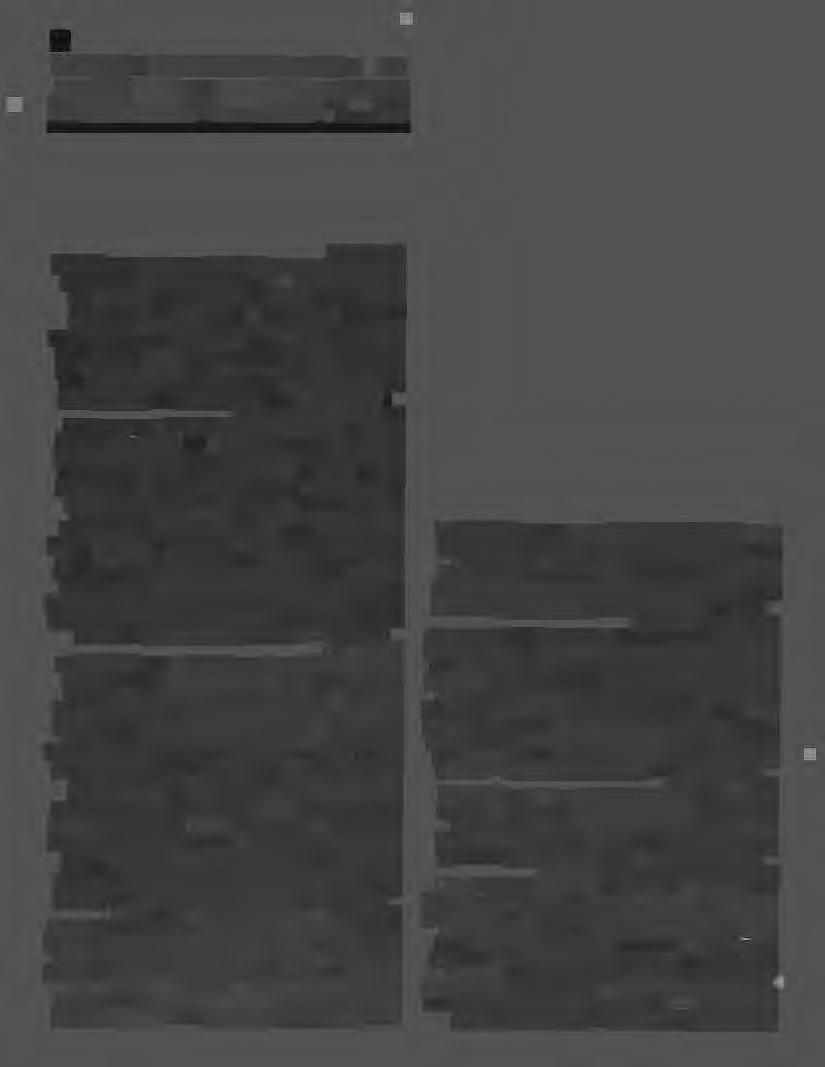
JOHN EDER is a commercial and fine art photographer living in New York City. His work has appeared in Red Tape, and he has done assignments for the VillageVoice and the Daily News, among ochers.
Text© 1988 John Eder. Photographs copyrighted by the photographers.
21
THEIMAGEWORKS

TomKnibbs
AnnE.Kurtz
MarciaLippman
HelenMarcus
ArthurMeyerson
ElizabethOpalenik
LiloRaymond
JohnShaw
CraigStevens
DennisStock
JaneTuckerman
DebraTurbeville
1,3,and6-DayWorkshops
22
',f<J( K A'-IJ A,,l<,'-~HNI PH<JTOCRAPHV P 0. HOX 44t \\'()()[)...,10( I\ '\;\ 1244H (J14 h:-'9-~ 1~/ SERVINGANINTERNATIONALEDITORIALMARKET airurthQihrnmr Cibachrome Specialists QualityPrintsfrom 35mmSlides P.O. BOX 3724 • KINGSTON, NY 12401 • (914) 246-6294 ~~1-········-·· - ~~~fi;~L---•-:1::L. • • • L :l': : 1": :J ,·· ::: ·~---- ! the world's photographic bookshop SEND FOR FREE CATALOG AND DOLLAR OFF COUPON! OPEN SEVEN DAYS A WEEK! 212 431-9358 THEMAJORNEWYORK - 1988 INTERNATIONALPHOTOGRAPHY ANDARTCOMPETITION
Walter
EXHIBITION: NOVEMBER 29
18 ART 54 Gallery, Soho, New York City, NY IOPENTOALLPHOTOGRAPHERS & ARTIs~s I DEADLINE:NOVEMBER9,1988 To receive your application write TODAY to: ART HORIZONS, Dept. CQ9, P. 0. Bo 1091 Larchmont, NY 10538 USA• (914)633-6661 SouthFlorida PhotographicWorkshops January - April1989 BocaRaton,Florida
JURORS: Ellen Handy-Metropolitan Museum of Art, NY Ilene Susan Fort-Los Angeles County Museum, CA
Robinson-"Art in America" Art Critic $4,000AWARDS
-DECEMBER
BillHayward
LenJenshel LucyJohnson
SamAbell JoeBaraban JimBrandenburg KipBrundage LucienClergue BruceDavidson SharonFox MichaelGeiger
ChristopherJames
SponsoredbyEastmanKodakCompany P.O.Box3018 • BocaRaton,FL33431 (407)997-9879or(800)323-3932 ;;•':··••"•\t~j.~\})~:~-' :;/:~":.:.'i-~.;~;;:.~

Fordiscriminating photographers theworldover, discriminating SLRsfrom Olympus.
AutoFocus OLVMPus· Olympus Corporation Consumer Products Group Crossways Park Woodbury, NY 11797 ® 23
OM-4Tand OM-77AF
INFLUENCEANDCONFLUENCE
CanaRockandRollGenerationProduceEnduringArt?
(hr.isWayne

Can a "pop" generation of young photographers, raised on rock & roll and prime-time soap operas, create enduring work? Do artists, emerging in the 80s, produce images capable of sustained contemplation? Perhaps my reservations stem from what appears co be a strong desire for success among chis group of young photographers brought up with Dynasty, Dallas, and Falcon ·Crest. At times it seems their career, rather than their work, could be their real goal. There are, fortunately, formal complexities chat remove this generation's work from the narcissism of tactless, unimaginative self-indulgence. Certain young photographers incorporate earlier styles and reference time-honored images in their work, represen.ting a new level of connoisseurship and historical aw·areness
Three emerging photographers, Robert Bianchi, Winfred Evers, and Robert Hammerstiel, effectively integrate historical styles with contemporary influences. Similar in spirit to the dadaist experiments ofJean Arp, Robert Bianchi disperses torn paper shapes throughout his elaborately seated sets. During his shoot, he provocatively positions fauvist females and provides chem masks which evoke Pablo Picasso's Les Demoisellesd'Avignon( 1907). Having extracted such elements from the early twentieth century, Bianchi then goes on to create large, painting-sized photographs which, because of their size, are clearly a product of the 80s. These dream-like fantasies are filled with androgynous figures and neoexpressionistic backdrops. His works uni'te figure and background into imaginative ensembles which explode with drama and lyricism. Like Bianchi, Winfred Evers, from the Netherlands, constructs imaginary staged environments. In Stuhl, Evers fragments a chair with inserted planes and cast shadows. This work adapts the cubist principles of Braque and Picasso
in the early 1910s to current techniques in lighting and printing. The result is a feat of visual irony: time and space become unified through an arrested image. Evers' typical work gravitates toward the abstract, mathematical order of De Scijl. le consists of eloquently balanced arrangements of studio props. Sometimes recognizable, sometimes not, these props are diffused in a manner reminiscent of the surrealist paintings of Joan Miro. They are polished, playful excursions into the realm of trompel'oeil.
Surrealist concealment, as practiced by surrealist painters in the 1920s and 1930s, specifically here by Rene Magritte, is incorporated in works by young Robert Hammerstiel from Austria. Hammerstiel's flagship photograph, An BordI, features a sinister figure standing partially obstructed within a matrix of \lertical doorjambs and horizontal lintels. Abandoned public spaces suggest early Giorgio de Chirico, as in his The Mystery and Melancholy of a Street ( 1914). But they evidence the 1980s in the stark minimalism of his mysterious photographs. These works are dense with formal relationships, setting strong two-dimensional patterns against threedimensional illusion. The sophistication with which Hammerstiel, along with Bianchi and Evers, reference historical styles reflects a thorough knowledge of early twentieth century art movements.
Aside from these references to twentieth century painting, I notice other work which appears more directly inspired by current commercial forms, like film and video. The collage-like color compositions of Lorie Novak (several of which contain actual video screens) would seem to access this video aesthetic. Her theatrically lighted photographs incorporating nostalgic images may even capture the attention of a mass market predisposed to br_illiance and bantering motion, yet they exceed this function.
In their fusion of past and present, they become sensitive and energetic depictions of a new reality.
Andres ·Serrano relies heavily on religious iconography in his Blood and Piss series. Is he sacrificing substance tactlessly for shock value or is the burning focus of his inspiration brilliantly intense? Through prolonged scrutiny I have come to find Serrano's work succeeding in purely visual terms. The impact of his sacred and profane portrayals, heightened by saturated color and large scale, is most fully revealed through the contemplation their confronting presence demands. The sacred subjects provide a conceptual framework that further engages the mind, thus enhancing, rather than restricting their impact as social symbols.
Rather than mimic their influences from historical and popular culture, these five emerging photographers digest and reflect them. They blend these influences with historical awareness co infuse their prints with complexities and social relevance chat will continue to have meaning·well past the drying time of their prints.
CHRIS WAYNE is an artist/photographer living in New York City. A one person show of his computer images is showing at the Franklin Institute in Philadelphia and will open at Vision Gallery, San Francisco, in October.
Text ©1988 Chris Wayne. Photographs copyrighted by the photographers.
24
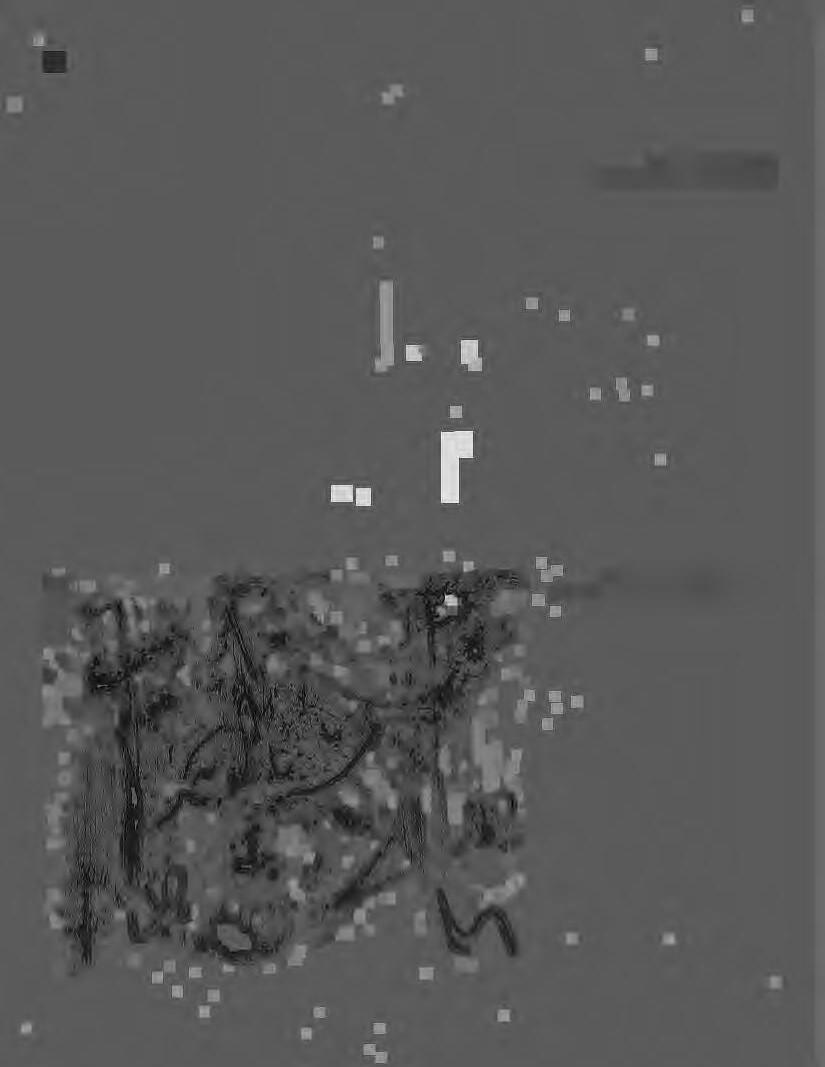 Robert Bianchi, Dripping Love, 40 x 60".
Courtesy Ledel Gallery, NYC, NY.
Robert Bianchi, Dripping Love, 40 x 60".
Courtesy Ledel Gallery, NYC, NY.
. I •. ;-.'}~i·,i·'·,· ··'-_.1·; /§'_ .' •1 ._· .,,,.,_..,.I•...-J ··-. -•-r, .. . ·:. ,, '1 I,. • ','.\"t_.l \ I• f I I , : • 1 \ I .~. -~...:..:..~.:~_,;-..; o-,,,J -~-- ~,._..._ }~;, J~, 1)J, 1!., i\: ,\ .• ~·),: :' ·,. '.-_;(:. •• -! '' ·~··111!!o!,, 25 ..
Winfred Evers, untitled, 1982. Courtesy Ledel Gallery, NYC, NY.
 Lorie Novak, Musical Chairs, 1987, original in color. Courtesy Lieberman & Saul Gallery, NYC, NY.
Lorie Novak, Past Lives, 1987, original in color. Courtesy Lieberman & Saul Gallery, NYC, NY.
Lorie Novak, Musical Chairs, 1987, original in color. Courtesy Lieberman & Saul Gallery, NYC, NY.
Lorie Novak, Past Lives, 1987, original in color. Courtesy Lieberman & Saul Gallery, NYC, NY.
26
Robert Hammerstiel, An Bord /, 1982/83. Courtesy Ledel Gallery, NYC, NY.
Andres Serrano, Crucifixion, 1987, 60 x 40", Cibachrome. CourtesyStuxGallery, NYC, NY.
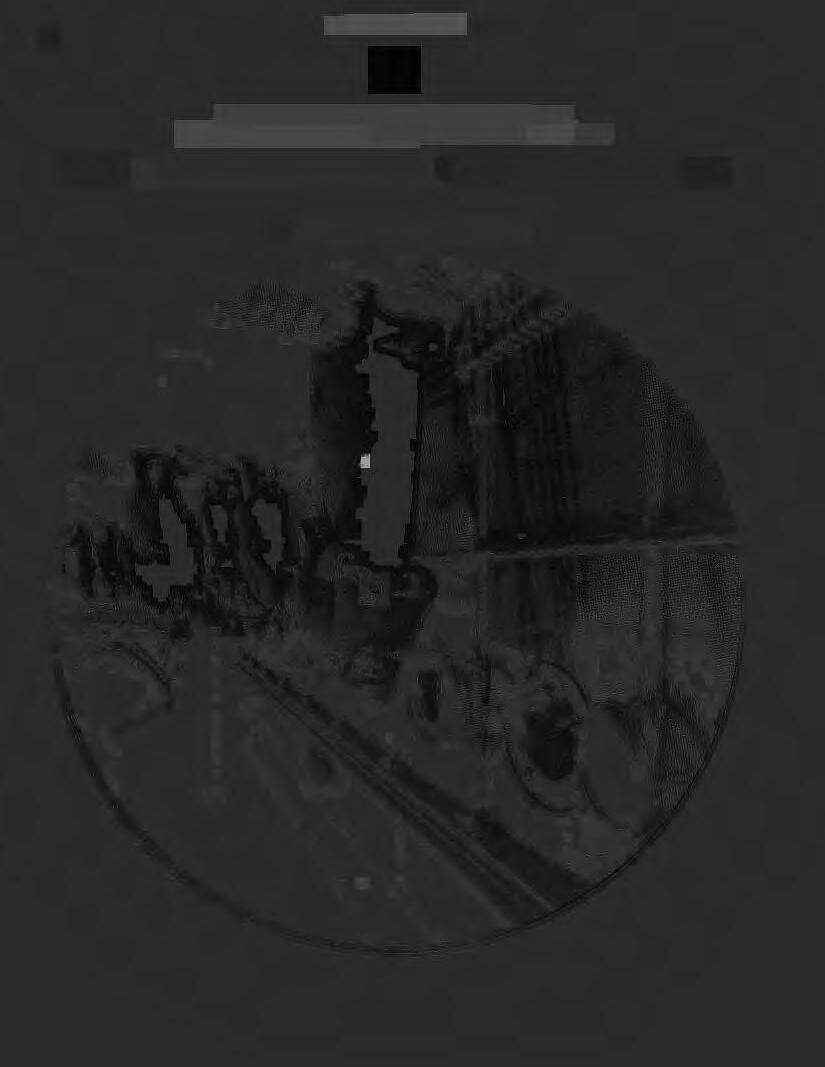
\ J '\ \ .l )/ GEORGEEASTMANENROUTETOEUROPE,1890. The most importantthinga photographercan develop is ability. That's why we proudly encourage and support this photographic workshop. Professional Photography Division, Eastman Kodak Company. • NI 27 © Ea~tman Kodak Company, 1987
SATURDAY,OCTOBER8,7:00PM
TOWNHALL,WOODSTOCK,NEWYORK
Featuringworkof19thcenturyphotographers: SamuelBourne,FrancisFrith,RobertMacPherson, EadweardMuybridge,CarloPontiandC.Naya 10thcenturymasterssuchas: EugeneAtget,MargaretBourke-White,Brassai,Alvin LangdonCoburn,EdwardS.Curtis,GeorgeHurrell, LotteJacobi,Karsh,AndreKertesz,RussellLee, GeorgePlattLynes,EdwardSteichen,AlfredStieglitz, JosephSudek,JamesVanDerZee,MinorWhite andcontemporaryartists: EllenCarey,VanDerenCoke,SandiFellman, CharlesGatewood,ChristopherJames,ArtKane, MikeMaccartney,MaryEllenMark,StarrOckenga, AndresSerrano,JoyceTenneson,GeorgeTice, JerryUelsmann
Catalogueavailable$100(checks,MOYaccepted) 59TinkerStreet,Woodstock,NewYork12498 914)679-9957or(914)679-7747
Letters
To the editors:
I just received the Spring 1988 issue of Center Quarterly, and feel I must protest its contents. I really cannot comprehend why the space in the journal was used for one person's [Barbara Hammer's] complaint about how films portray lesbian relationships; or a report [by Micki McGee] about how someone is murdered, cut into pieces, seasoned, and eaten. A topic like "Sex and Sexism" should have included photography in a meaningful way, given the work done by people like Helmut Newton, Judy Dater, Robert Mapplethorpe, and many others. Instead, a significant portion of the issue was used as a soapbox for items essentially unrelated to "photography, film, video, and related arts", which are the subject areas of the Center as stated on the masthead. Another example of the unrelated material is the cartoon [by Heather McAdams] on page 24. Please, think about the purpose of the Center while selecting the conrents of the journal.
-Tom Remick, Mentor,
Ohio
Mixing sex and sexism in "photographyand related arts" for a single issue may in fact confuse two separate and important areas, but the roots of both (sex and sexism) are not unassociated. By whatever name, the moral cannibalizationof women by men and of homosexualsby heterosexualsis certainly "meaningful" enough for me, and is painfully "related" to the work of Helmut Newton and countless others.
Barbara Hammer was not just complaining-she was reporting on a fundamental problemin producingand screeninglesbianfilms. And she gave great optimism for solutions already begun. Micki McGee was not simplyout to shock, as the rest of herpiecemakes clear. And, honestly, Heather McAdam's cartoon was for me absolutelyperfect for the issue. A soapboxfor items unrelated?I just don't get it.
-Editor

To the editors:
The Spring Center Quarterly is a quantum leap in believability, with an improvement in graphic design and access to the conrents. The cover graphic was very appealing, with much smaller self-promotional logo, and the content was really exciting. The quality of the articles was outstanding!
-Gary Nickard, Director CEPA, Buffalo, New York
28 THECENTERFORPHOTOGRAPHYATWOODSTOCK
TENTHANNUALBENEFITAUCTION
© MaryEllenMark
SUBSCRIBE! THECENTERQUARTERLY U.S.,Canada,andMexico:$15 allothercountries:$35 Formoreinformation,callorwrite: TheCenterforPhotographyatWoodstock 59 TinkerStreet,Woodstock,NY12498 </)914-679-9957
Books

TheReturnoftheSlapstick Papyrus, by F. Deschamps. Visual Studies Workshop, 31 Prince St., Rochester, NY 14607. 1988. 132 pages, softcover. Also available for $15 postpaid from F. Deschamps, 51 Church St., New Paltz, NY 12561.
Many of us know by now that photographs can lie, but few of us are willing to submit that photographs always lie. Or, conversely, most of us believe that photographs often really do tell something close to the truth. We still look to photographs for proof of what is, rather than what is not. We find that in practice, photography and fiction-especially literature-rarely mix.
More than a decade ago Arthur Tress' Shadow (1975) presented a narrative story in photographs of a shadow figure taking an adventure all over the world. While not without precedent (The Journey of the Spirit after Death, 1971, by Duane Michals, and earlier picture novels come to mind), Shadow showed a playfulness and fantasy that was pure fiction ... and pure inspiration.
The Return of the Slapstick Papyrus takes the photographic short story further. Here Franc;ois Deschamps combines his own fictional text with photographs that substantiate the lie. To get a sense of the story, take this excerpt from the back cover:
In 1998, just before the Eat the Rich Campaign, Rogue Savage is hired by the sinister Doctor Francisco to trace a
mysterious large bird. Rogue's twin brother Rusty, the notorious Egyptologist, disappears. The lovely and intelligent Professor Katherine, mistress of many languages
Inside, the mood takes off from film noir:
The next day I'm back in the Windy City with red eyes and a heartbeat in my head. I was up drinking all night in a honkytonk with some broad named Lulu. I couldn't get her to come back with me to the motel. She kept wanting to go to a Sigma Parlor instead.
Could've been Sam Spade, except that Sigma Parlors are another thing all together-image centers for the wealthy that recreate scenes and events with absolute, wrap around, 3-D authenticity. Straight from Ray Bradbury's The Veldt.
Deschamps' plot is rich and hilarious, but even better are his pictures, proof of the facts. Cadillacs falling from the sky, adventure maps, the third world, even a documentation of the Slapstick Papyrus itself, all without pretentions.
Slapstick Papyrus is direct and funny. In addition to the sophistication of its construction, there is in the interior perhaps a further comment on photography itself and the current market/ media system. Dr. Francisco reveals, "As I always say, 'fight imagery with imagery."' Further, Deschamps is making a statement about privilege, the Third World, and image. Again, Francisco:
All power is based on separation. The rich are separated from the poor, the law abiding from the criminal, the Chinese from the black .... Separation creates the other, and that leads to insensitivity, even cruelty. Misfortune is what happens to the other."
ls there medicine for this malaise? Yes, the secret is in laughter, and in this book, as in the original 3000 year old papyrus, there is an abundance.
-Bil Jaeger All photographs by F. Deschamps and © 1988 F. Deschamps.
r= w ..,d:--~•:ct)Wd I
29

,~ Mt. Trell)per 11)1) BedandBreak/ast in an elegant Victorian mansion Rt. 212 & Wittenberg Rd. Mt. Tremper New York 12457 (914) 688-9938 Woobstotlts / ",j-/,fYIJ~Jtn ~oob --,_7~1C€nt€~w-~-BOOk * StOR€ 10 MILL HILL ROAD WOODSTOCK, N. Y. 12498 OPEN 7 DAYS 914-679-9900 u;r~~ 59 Tinker Street• Woodstock• NY 12498 • 679-2487 OPEN DAILY llAM-lAM • FRI., SAT., SUN. till 3AM SERVING BRUNCH ON SUNDAYS 11AM-3PM Featuring Live Entertainment Nightly "HOME OF THE BLUES PLATE SPECIAL" lorettaklein "Woodstock's Favorite Gift Shop" 25 TINKER STREET WOODSTOCK, N.Y. 12498 914·679·7000 OPEN 7 DAYS Ii VALLEY COURIER & DELIVERY SERVICE, INC. EAST CHESTER STREET BYPASS, KINGSTON, NEW YORK 12401 30 24 HRS. 9 I 4/336-407 4 SAME DAY SERVICE Woodstock's Oldest 914-679-9479 GuestHomt£Ji 1' _,, / ', ~j;:~ win fiables -;.,'@---:~ of.Woodsloch. ny I .,' , , /,. ti.• Cat~lti/1,"' .ii!,:. The Hoffmann Family 73TINKERSTREET,WOODSTOCK,N.Y.12498 Duchesse Anne Hotel Restaurant Francais Creperie Bretonne 4 Miller Road Mt. Tremper. N. Y. 12457 914-688-5 260 Double/Single Rooms Available, $25 and up For Fine Foods, Shop BAZAR 17 Tinker St., Woodstock,NY 679-5434 Make it a point to visit our LaBellaPasta For Fresh Pasta anJ Ravioli Route 28Between Woodstock & Kingston Eat In or Take Out 331-9130 11 SfR.WINE&LIQUORS 33 R STR. WOODSTOCK. 679 2669 11-fECONNOISEUR'SQ-IOICEFORFINEWINES Scott Morgan Vavuz Stimer ~,ANATOIJIA, TRIBAi,RLJGS&WEAVINGS The Largest Importers of Turkish Kilims ~-':.~~~rin~ Wholesale.!,'.! the Publi•c···, .r:~~1....., 'l14"679•531a-=• s4 g Tinker Street, Woodstock N.Y.12498 Hours: Monday-Friday 12-5 pm (OlO~~l lQ>~~~(V WOOOSIOCK 0 KODAK FILM DISCOUNT PHOTOFINISHING 679-2222 679-2221
View of the Old City, Jerusalem, Israel, 1984-88
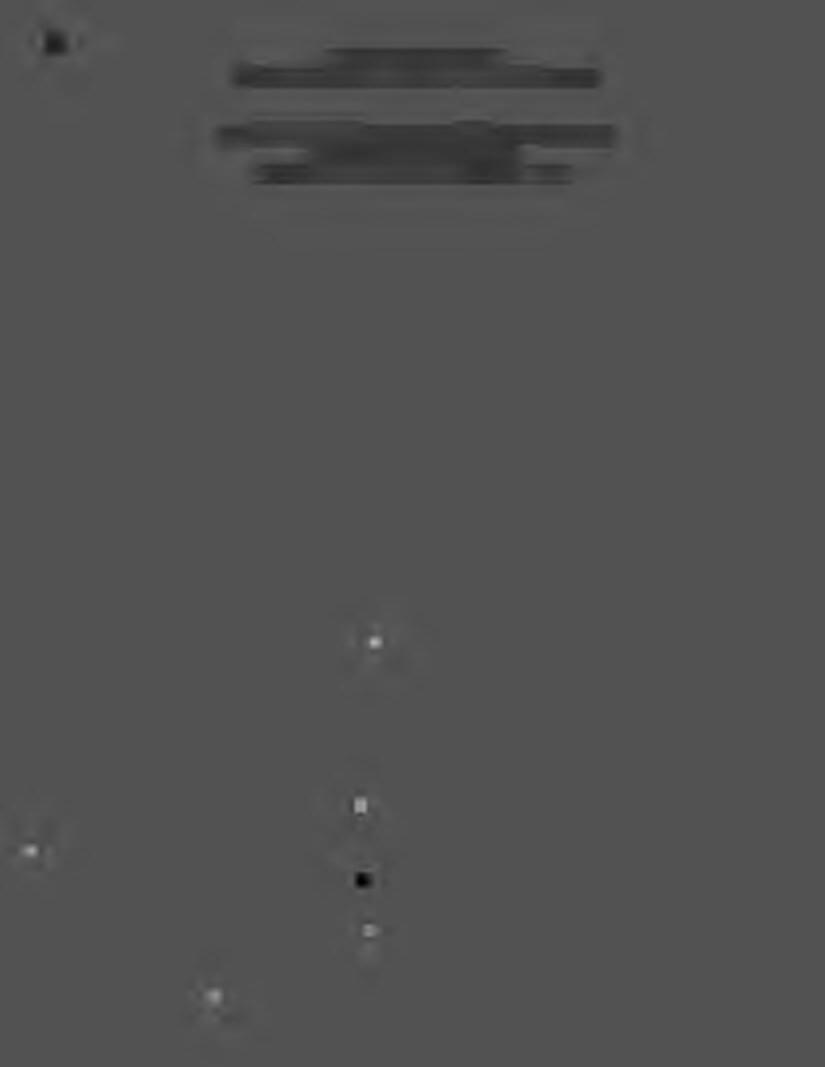
Polaroid Corporation -Cambridge, Massachusetts 02139
Contact: Barbara Hitchcock
Photograph by Elaine O'Neil
Palladium contact prints from Polaroid Positive/Negative film
31
one-stop shopping
Sprint Systems of Photography manufactures a complete line of photochemistry for most darkroom procedures, including B&W negatives, prints, and reversal slides, Color films and prints, and special applications such as litho films, pyro negatives, and hand-sensitized prints. Sprint products offer some truly original advantages and improvements:
All are liquids that may be diluted and mixed accurately in any amount at room temperature. No powders, hot water, or large storage bottles are needed.

Each liquid is a component of a modular system. Most have more than one application, and fewer separate products are needed to stock a complete darkroom.
Working solutions process a high volume of prints or films per liter. Compare the capacity of Sprint chemistry with other brands, per liter and per dollar.
Every solution works quickly and efficiently without sacrifice of performance, to reduce total processing time and increase archival permanence.
Toxicity and odors have
been minimized and allergenic ingredients have been omitted whenever possible.
We invite you to call us collect for more information, and then to try our chemistry in your own darkroom. The results may be the best reason of all to use SPRINT.
PTHECENTERFORPHOTOGRAPHYATWOODSTOCK59TINKERSTREET.WOODSTOCKNEWYORK12498 Non-ProfitOrg. U.S.Postage PAID PermitNo.33 Woodstock, NY 12498 w addresscorrectionrequested 1987/1988CATSKILLCENTERFORPHOTOGRAPHYBUILDINGFUNDDONORS Sally Avery PatriciaCarroll Joan P. DuFault FrancesGerngross KathleenKenyon,Sr. CharlesA. Meyer Lilo Raymond Bruce Bashford PhilipCavanaugh Paule Susan Epstein EvelynGluckman Steven Kurlander Toby Miller Jon Reis PamelaBenepe GrenvilleCheng BernardEsrig MargotGranitsas Gay Leonhardt Joan Monastero Shelly Rusten KennethW. Brett,Jr. DeborahS. Clark Henry Feldstein HowardGreenberg Ellen Levy Ann L. Morse Lee C. Sievan StephenBrown ReginaCoppola Vinnie Fish SandraL. Haber Ann Lovett Joan Munkacsi Rich Trivolis RobertCalhoon Liza Cowan Susan Fowler-David Hall Joanna McCarthy Hans Namuth Fred C. Weinmann Karen Capucilli JenniferL. Curry Gallagher Dede Hatch F. Barry McWilliams New York Telephone Ken White Alan Carey VincentD'Addario Steven Friedman Sherry N. Heier Elliott Meisel OlympusCorporation RonaldWilcox CecilleC. Davis Hans Gerngross Kenro lzu Helen C. Meurs- MichaelPutnam PLEASESUPPORTTHEBUILDINGFUNDCAMPAIGN/BROCHUREAVAILABLE
[]] ;] [1 ____ ® SYSTEMSOFPHOTOGRAPHY.INC. ( • { - ' • 100DexterStreet,Pawtucket,RI02860 ·rel.(401)728-0913Monday-Thursday
























 Robert Bianchi, Dripping Love, 40 x 60".
Courtesy Ledel Gallery, NYC, NY.
Robert Bianchi, Dripping Love, 40 x 60".
Courtesy Ledel Gallery, NYC, NY.
 Lorie Novak, Musical Chairs, 1987, original in color. Courtesy Lieberman & Saul Gallery, NYC, NY.
Lorie Novak, Past Lives, 1987, original in color. Courtesy Lieberman & Saul Gallery, NYC, NY.
Lorie Novak, Musical Chairs, 1987, original in color. Courtesy Lieberman & Saul Gallery, NYC, NY.
Lorie Novak, Past Lives, 1987, original in color. Courtesy Lieberman & Saul Gallery, NYC, NY.




